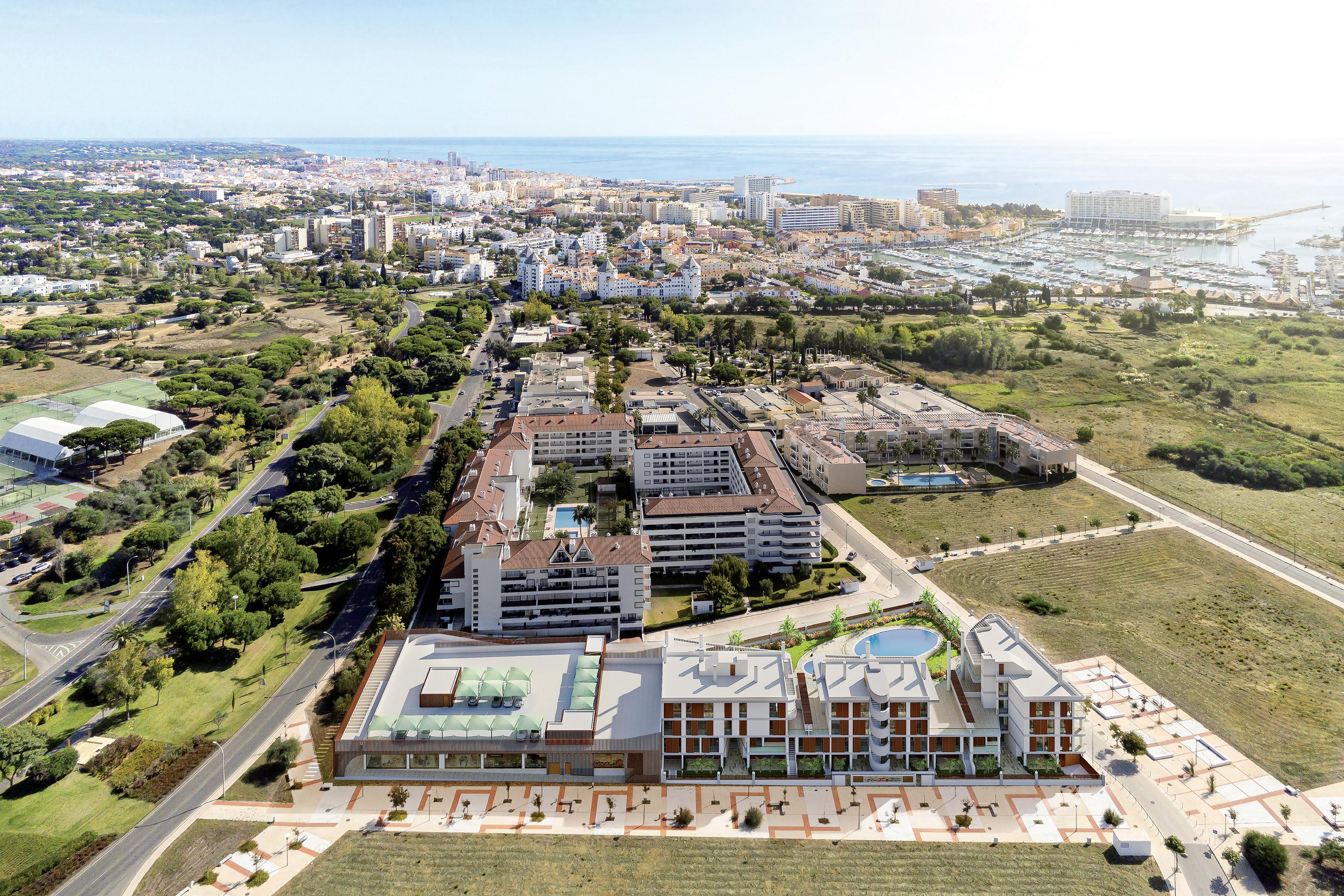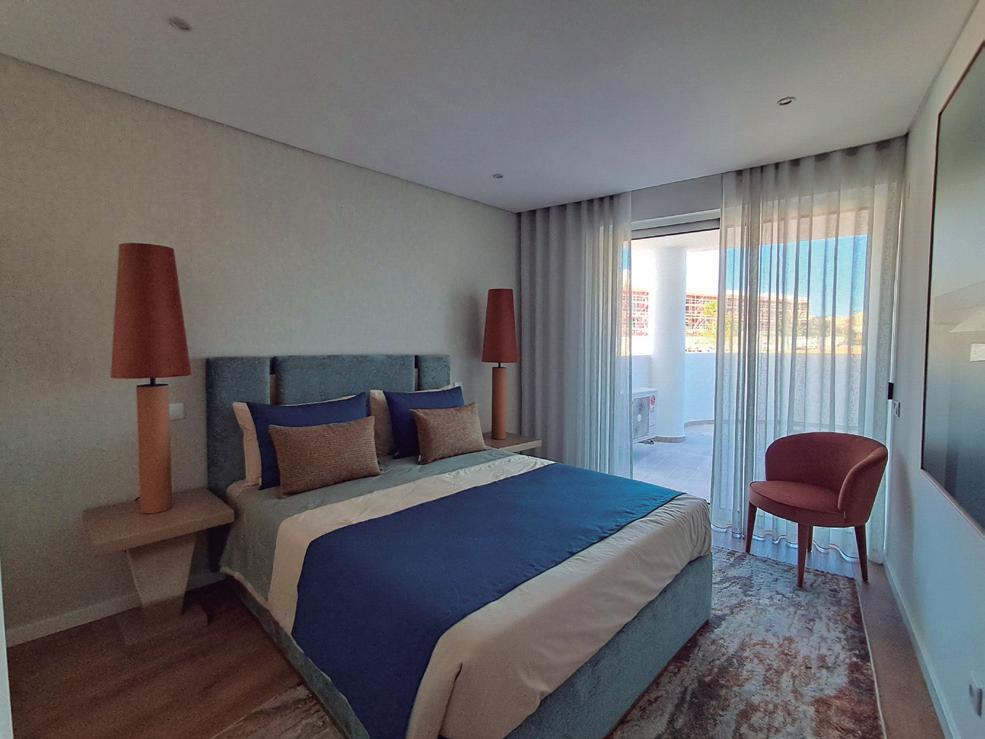Construção Ambiente Turismo



The shapes and spaces of Tourism Real Estate



Carla Celestino
Directora Director
A Magazine Imobiliário esteve presente na inauguração do projecto Viceroy at Ombria, no Algarve, 25 anos depois. O momento contou com a presença do secretário de Estado do Turismo, Pedro Machado, que recordou que este foi um projecto que “demorou anos a podermos concretizar o seu processo de licenciamento.”
Nesta edição falámos com o administrador do Grupo Vila Galé, Gonçalo Rebelo de Almeida, que focou precisamente este assunto, avançando que é mais célere licenciar empreendimentos turísticos no Brasil do que em Portugal.
Como o tema não é novo, embora devesse voltar ao debate por parte do novo Executivo, preferimos olhar para as formas e volumes dos edifícios turísticos e perceber quais as novas tendências que arquitectos e designers seguem na hora de criar empreendimentos turísticos repletos de beleza, funcionalidade, privacidade e cheios de alma. Consciência colectiva e ambiental, experiências sensoriais, espaços autênticos e que contam histórias dominam as inspirações dos arquitectos e designers.
Tendo isto em mente, lançamos o desafio ao caro leitor de se perder, ou achar, num resort, hotel ou alojamento local do nosso País e deixar-se emocionar pelos interiores de Portugal.
Magazine Imobiliário was at the inauguration of the Viceroy at Ombria project in the Algarve, 25 years on. The event counted on the presence of the Secretary of State for Tourism, Pedro Machado who recalled that this was a project that had “taken years to materialise and get planning permission.”
In this edition we talk to the CEO of Grupo Vila Galé, Gonçalo Rebelo de Almeida, who actually focused on this very question, telling us that it is faster to get planning permission for tourism projects in Brazil than in Portugal. Since the topic is not new, although it should return to the discussion table under the new government, we preferred to look at the shapes and spaces of tourism buildings to understand what the new trends are that architects and designers follow when they create beautiful tourist developments that are functional, full of soul and provide privacy.
Collective and environmental awareness, sensory experiences, authentic spaces that tell stories and strongly inspire the inspiration of architects and designers.
With all this in mind, we throw down the gauntlet to our dear reader to lose or find themselves in a resort, hotel or local accommodation in our country and let themselves be moved by Portugal’s interiors.
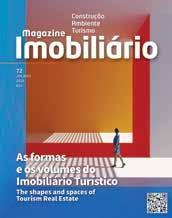
4
Grande Tema
Lead Story
Imobiliário turístico está a reinventar-se
The reinvention of tourist real estate
12
Sol e Lua Tourism Vale do Lobo
Uma nova era para o icónico resort algarvio
A new era for the Algarve’s iconic resort
18
Broadway Malyan
Boom do turismo em Portugal transforma oferta hoteleira
Tourism boom in Portugal transforms hotel offer
22
Porto afirma-se como cidade inteligente e inovadora
Porto is an intelligent and innovative city
26
Grupo Vila Galé
Vila Galé Group Operação no Brasil
Operation in Brazil
32
Grande Entrevista
The Big Interview John Calvão
Principal Arrow & Fund Portfolio
40
Metro Quadrado Square Meter Opinião Opinion
Miguel Marques dos Santos O programa do Governo para a habitação
The government’s programme for housing
42 2.ª edição da conferência Green Shapers
2nd edition of the Green Shapers Conference
46 Lá fora Abroad Opinião Opinion
Reino Unido United Kingdom Rug Pull
48 Paparazzi Lisbon for rent!
Ficha técnica Datasheet
Propriedade Property Palavras Aliadas
Sociedade Unipessoal, Lda. NIPC – 510 653 901
Administração Anabela Loureiro
Rua Paulo Reis Gil nº 39, 3º Esq. 2745-195 Queluz
Telm. / Mobile: (+351) 96 237 00 08 geral@palavrasaliadas.pt www.magazineimobiliario.com
Fundador da Magazine Imobiliário Founder of Magazine Imobiliário Joaquim Pereira de Almeida
Directora Director Carla Celestino
Sede de Redacção / Editor
Rua Paulo Reis Gil nº 39, 3º Esq. 2745-195 Queluz
Colaboradora Permanente Permanent Contributor Elisabete Soares
Colaboradora Contributor
Bruna Margalho
Fotografia Photography Anabela Loureiro
Tradução Translation Chris Graeme
Grafismo Graphics Luís Silva
Contabilidade Accounting Nasceconta
Periocidade Frequency Bimestral
Tiragem Number printed 3.000 exemplares
Impressão Printing Jorge Fernandes, Lda. Rua Qta. de Marcarenhas, 2820 Charneca da Caparica
Depósito Legal Legal Deposit 363718/13
SSN – 2183-0517
ERC – 126397
Estatuto editorial disponível em: Editorial policy available at: www.magazineimobiliario.com



Formas e volumes
Shapes and volumes
O Verão apela a uma estada num alojamento turístico colectivo ou privado, mas também há quem aproveite para adquirir uma primeira ou segunda habitação de férias para uso próprio ou investimento. As formas e os volumes dos exteriores e interiores dos edifícios vocacionados para a indústria turística variam. Por isso, fomos à descoberta de tendências e inspirações. The summer calls for a stay in a shared or private tourist accommodation, but there are also those who take advantage of acquiring a first or second holiday home for personal use or investment. The shapes and the volumes of the exterior and interior of buildings aimed at the tourism industry vary. Which is why we went to discover trends and inspirations.
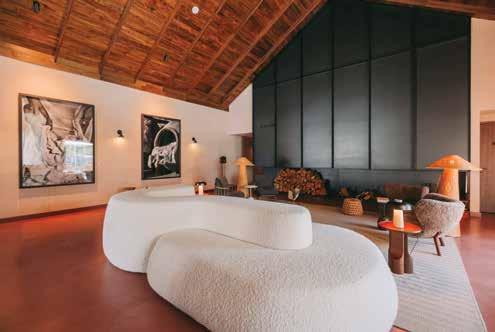
Com vista para o mar ou nos centros históricos, com arquitectura contemporânea ou de mestres artesãos, com ou sem amenities, o imobiliário turístico em Portugal continua a atrair a procura nacional e estrangeira, seja para uso próprio ou para rendimento. Já todos sabemos o que os turistas ou investidores pretendem encontrar no nosso País: o clima ameno, a segurança, a nossa gastronomia e lifestyle, autenticidade. A localização também continua a estar no topo das preferências, seja em Lisboa, Porto, Vilamoura ou outra cidade do País, seja em zonas como o Douro ou Comporta. Há quem privilegie empreendimentos com vista de oceano outros de rio, enquanto uns escolhem locais com acesso a piscina, ginásio e spa, há quem prefira desfrutar de passeios em jardins ou em passadiços de madeira, também há aqueles que ficam parados numa entrada a apreciar os azulejos, os que lançam um olhar aos frescos dos tectos e os que se perdem numa pintura a óleo num corredor… seja um refúgio de férias ou um negócio, estes edifícios têm de corresponder às expectivas do comprador ou consumidor. Têm de ser apelativos do ponto de vista da arquitectura, design e decoração, mas também do conforto e privacidade. Dizem que a primeira impressão é o que marca num edifício turístico e define se pode, ou não, impactar a nossa memória para todo o sempre daquelas férias em Portugal. Será? Ao que parece, o design moderno ou a tipicidade arquitectónica local são determinan -
tes. Mas já não basta um edifício ter formas e volumes belos, cada vez mais, tem de ter soluções inovadoras, tecnológicas, domótica e streaming, assim como incluir opções amigas do ambiente que permitam reduzir os consumos, reutilizar e reciclar materiais, economizar água, ser energeticamente eficiente, promover a poupança de água, utilizar plantas xerófitas, etc..
Mas será que todos estes factores são determinantes na hora de idealizar os interiores e exteriores de um empreendimento turístico? Falámos com duas especialistas e parece haver sintonia.
Expert em Arquitectura e Design de Interiores de empreendimentos turísticos, a nível nacional e internacional, Nini Andrade Silva defende a ideia de que o imobiliário turístico está a viver um momento de reinvenção, onde o design transcende a estética e se transforma num verdadeiro motor de experiência.
Para a designer de interiores e fundadora do Atelier Nini Andrade Silva, a tendência passa por “criar espaços que contam histórias, que se ligam ao território, que respiram autenticidade — e que, acima de tudo, respondem a um novo tipo de viajante: mais consciente, mais sensível, mais exigente.”
Vai mais longe e diz que, em termos arquitectónicos, “há uma clara valorização da integração paisagística, do uso de materiais naturais e locais, da modularidade e da aber-
Fora

tura dos volumes ao exterior. Nos interiores, assistimos ao regresso das texturas orgânicas, das paletas cromáticas serenas, e da presença da arte como elemento identitário.”
Mas há uma dimensão incontornável que se impõe cada vez com mais força: a tecnologia. “Não como elemento decorativo ou intrusivo, mas como infra-estrutura silenciosa que potencia conforto, sustentabilidade e eficiência”, esclarece. Tratam-se de “sistemas inteligentes de gestão energética, controlo térmico e acústico, soluções de domótica que se adaptam ao perfil do hóspede, e experiências imersivas através de realidade aumentada ou iluminação cenográfica são cada vez mais comuns.”
Na sua opinião, a tecnologia, quando bem integrada, eleva a experiência e permite um design mais funcional, mais intuitivo, mais emocional.
Há também um apelo global ao luxo, mas que “não grita”. É um “luxo do silêncio, do espaço, da personalização e da ligação ao lugar. E isso reflecte-se tanto na forma como nos volumes que desenhamos.”
Pelo crivo de Nini já nasceram hotéis notáveis como o W São Paulo, o Dos Reis Boutique Hotel, o Hilton Porto Gaia Hotel, The Lodge Wine & Business Hotel, o Zenite Boutique Hotel ou o Saccharum Hotel Resort & Spa na Madeira, só para citar alguns.
Questionando de onde provém a sua inspiração, imaginação, confessa-nos que “nasce sempre de dentro — das histórias das pes-
soas, dos lugares, das suas memórias. Nunca parto de uma tendência como ponto de partida; parto da essência. O meu processo criativo é profundamente emocional e intuitivo, embora sustentado por uma experiência consolidada e um conhecimento atento do que se faz no mundo.”
Afirma que acompanha o que se vai criando internacionalmente, mas que nunca permite que isso tolde a sua liberdade do traço ou a força da narrativa, pois prefere “ditar caminhos do que seguir fórmulas”.
Partilhamos a sua ideia de que os interiores deve ser, sempre que possível, disruptivos e não apenas bonitos — devem provocar, tocar, fazer pensar. “A forma e o volume ganham corpo quando contam uma história, quando resgatam tradições e as transformam em linguagem contemporânea. É esse o meu compromisso em cada projecto: criar espaços com alma, onde o design não é um fim, mas um meio para emocionar”, remata a designer de interiores.
Exteriores que promovem experiências sensoriais
A arquitectura paisagista também tem uma palavra a dizer no que concerne aos empreendimentos turísticos e as tendências integram-se em conceitos como o regrounding, valorizando a integração na natureza e o carácter local, a promoção da sustentabilidade, a criação de espaços multifuncionais, a valorização da biodiversidade e a criação de experiências sensoriais únicas
Hotéis que devolvem mais do que consomem Hotels that give back more than they consume
A arquitectura regenerativa vai além da sustentabilidade: propõe edifícios que contribuem activamente para a recuperação dos ecossistemas urbanos. No turismo, surgem projectos com fachadas verdes, painéis solares e hortas comunitárias que reduzem emissões e combatem o sobreaquecimento das cidades.
O hotel Svart, na Noruega, é pioneiro: com abertura prevista para 2027, será o primeiro resort do mundo a operar com energia positiva, produzindo mais do que consome graças ao design circular e tecnologias limpas. Estes hotéis deixam de ser consumidores passivos e tornam-se agentes de regeneração ambiental, integrando-se nas cidades como infra-estruturas verdes, resilientes e socialmente úteis.
Regenerative architecture goes beyond sustainability: it proposes buildings that actively contribute to the regeneration of urban ecosystems. In tourism there are projects with ‘green’ façades, solar panels and community allotments that reduce emissions and tackle the overheating of cities.
The hotel Svart in Norway is a pioneer: slated to open in 2027, it will be the first resort in the world to operate on positive energy, producing more that it consumes thanks to its circular design and clean technology. These hotels are no longer passive energy consumers but have become agents of environmental regeneration, integrating in cities as green infrastructures that are resilient and socially useful.
para os utilizadores. Como nos explica Lydia las Casas, arquitecta paisagista e directora associada da Broadway Malyan, os “empreendimentos surgem mais integrados na paisagem natural, utilizando vegetação autóctone, criando espaços com um cariz mais orgânico que proporcionam experiências autênticas e relaxantes” e, simultaneamente, esta abordagem é também “mais sustentável pela preservação de recursos fundamentais como o solo e a água, e pela promoção da biodiversidade.”
Os espaços exteriores tornam-se mais versáteis e multifuncionais, podendo ser utili-

zados para diferentes actividades de recreio passivo e activo. Estes espaços exteriores criam, segundo a arquitecta paisagista, “experiências sensoriais que envolvem os visitantes, através do uso da cor, das texturas, dos aromas, dos sons e dos sabores, criando uma atmosfera agradável e estimulante, que se relaciona com a memória, a história, as tradições e os valores específicos daquele lugar/região, gerando um produto com significado cultural e emocional.”
A natureza e a arte estão igualmente a invadir o interior e o exterior dos espaços dos empreendimentos turísticos.
Lydia las Casas considera que os espaços exteriores e a vegetação, apresentam-se mais integrados na arquitectura e no design de interiores, através da Biofilia: “O limite entre os espaços interiores e exteriores dilui-se, e os elementos naturais integram os conceitos.”
Já a arte, sempre presente nos jardins, nos espaços urbanos como elementos de referência, ganha, de acordo com a especialista, uma nova escala, tendo cada vez maior presença nos projectos de arquitetura paisagista e interior design, que hoje em dia integram especialidades como a curadoria de arte. “O valor da beleza natural e da beleza artística, agregam valor real à experiência dos hóspedes, criando experiências mais autênticas e personalizadas, para além de valorizarem a cultura local e a sustentabilidade.”
Consciência colectiva e ambiental
Não temos uma “bola de cristal” para antecipar qual será o próximo caminho que as formas e os volumes turísticos vão seguir.
Mas Nini Andrade Silva diz-nos que se tivesse de arriscar, diria que o futuro dos interiores turísticos passará pela “radical personalização da experiência, mas ancorada numa consciência colectiva e ambiental muito mais exigente.”
Vamos, pois, assistir a uma “crescente valorização do imaterial: a memória, o silêncio, a sensação de abrigo”, onde o design vai evoluir para “uma linguagem ainda mais sensorial e responsiva, onde a tecnologia será invisível, mas omnipresente, ao serviço do conforto e da sustentabilidade” e os interiores “deixarão de ser apenas espaços físicos — serão experiências curadas, imersivas, quase teatrais.” Já o luxo, “continuará a transformar-se: será cada vez mais invisível, mas profundamente sentido.”
No fundo, o próximo grande caminho será o de regressar às origens, mas com os olhos no
futuro. Criar com verdade, com propósito, e com alma.
With a sea view or a view over historic town centres, with contemporary or master craftsmanship, with or without amenities, tourist real estate in Portugal continues to attract national and overseas demand, whether for own use or as a source of income. We already know what tourists and investors are looking for in Portugal: a mild climate, security, Portugal’s cuisine, lifestyle, and authenticity. The location, too, continues to be at the top of preferences, whether in Lisbon, Porto, Vilamoura, or another city in the country, be that in areas like the Douro or Comporta.
There are those who prize ocean view developments, others a river, while some choose places with access to the pool, gym, and
spa. Some prefer to enjoy garden strolls or walks along wooden pathways. Also, there are those who linger at an entrance to admire Portuguese azulejos tiles, others who cast their eyes over frescos on ceilings, and those who get lost in an oil painting on a corridor. Whether a holiday refuge or a business, these buildings have to meet the expectations of the buyer or consumer. They have to be appealing from the point of view or architecture, design, and décor, but also comfort and privacy.
They say that the first impression counts in a tourist building and defines if it can or not make an impact on our memory forever for those holidays in Portugal. Is that likely? And it seems that modern design or typical local architecture are deciding factors. But it is not enough for a building to have lovely shapes and spaces. Increasingly it has to have Temperatura
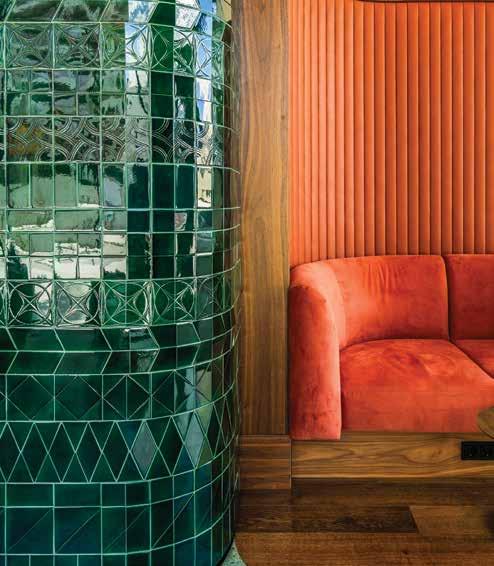
Too many tourists and too few beds?
O turismo em Portugal bateu recordes: só em 2024 registaram-se 80,3 milhões de dormidas, com 2025 já a crescer acima dos 8 % em número de hóspedes. Mas a oferta hoteleira não está a acompanhar.
A capacidade instalada cresceu abaixo dos 5 %, enquanto a procura avança a ritmo acelerado.
Em Lisboa e Porto, os novos projectos enfrentam custos de construção elevados (+4,3 % em 2024) e morosidade no licenciamento. Resultado? Quartos escassos, preços em alta e alojamentos cheios.
Há mais turistas do que camas e o mercado sente a tempestade de um sector que cresce depressa demais para o betão que o deveria sustentar.
Tourism in Portugal has beaten records: in 2024 alone, they registered 80.3 million overnight stays, with 2025 growing above 8% in the number of guests. But hotel offer is not keeping pace. Installed capacity grew below 5% while demand advanced at an accelerated rate.
In Lisbon and Porto, new projects face high construction costs (+4.3% in 2024) and sluggish licencing. The result? A lack of rooms, high prices and fully-booked hotels.
There are more tourists than beds and the market is feeling the storm of a sector that has grown too quickly for the concrete that should sustain it.
innovative and technological solutions, demotics, and streaming, as well as including environmentally-friendly options that enable reductions in consumption, reusing and recycling materials, saving water, being energy efficient, encouraging water saving, using xerophyte plants, etc...
But are all these factors really decisive when it comes to designing the interiors and exteriors of a tourist development? We spoke with two specialists and there seems to be agreement.
An expert in the Architecture and Design of Interiors of tourism developments, both nationally and internationally, Nini Andrade Silva argues for the idea that tourist real estate is experiencing a moment of reinvention, where design transcends aesthetics and becomes an authentic driver for experience. For the interior designer and founder of the Nini Andrade Silva Studio, the trend is now
about “creating spaces that tell stories, that are linked to the region or city, that exude authenticity - where, above all, they cater for a new kind of traveller: more aware, more sensitive, but demanding.”
She goes much further and says that in architectural terms, “there is a clear preference of landscape integration, using natural and local materials, modularity and opening out spaces to the outside. In the interiors we are seeing the return of organic textures, calm colour palettes, and the presence of art as an identifying feature.”
But there is an irrefutable dimension that is increasingly graining ground: technology. “Not as a decorative or intrusive element, but as silent infrastructure that enhances comfort, sustainability and efficiency,” she clarifies. These are ‘intelligent energy management systems, with temperature and acoustic control, demotic solutions that can be adapted to the profile of the guest, and immersive experiences through augmented
reality or stage-like lighting.”
In her opinion, when technology is well integrated, it raises the experience and allows for a more functional, intuitive, and emotional design.
There is also a global call to luxury, but one that is understated and doesn’t “shout it from the rooftops.” It is a “silent luxury” of space, customisation, and a link to place. And this is reflected as much in the shape as in the spaces that we design.”
Notable hotels have been created with Nini’s hallmark style such as the W São Paulo, the Dos Reis Boutique Hotel, the Hilton Porto Gaia Hotel, The Lodge Wine & Business Hotel, the Zenite Boutique Hotel, and the Saccharum Hotel Resort & Spa in Madeira, just to mention some.
Asked where she draws her inspiration and imagination from, she admits that it always “comes from within” - stories of people, places, and her memories. I never use trends as a starting point; I start from essence. My

Em que ficamos? Where we
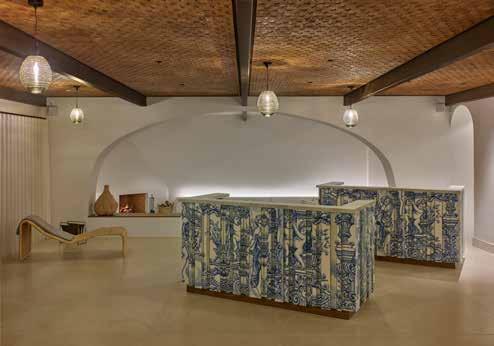
creative process is deeply emotional and intuitive, although based on a consolidated experience and an experience of what’s done in the world.”
She states that she keeps up with what’s being created internationally, but never allows this to cramp her freedom of line or strength of narrative as she prefers to “dictate paths rather than follow formulas.”
We share her idea that interiors should, whenever possible, be disruptive and not just attractive - they should provoke, touch us, and make us think. “Shape and volume gain body
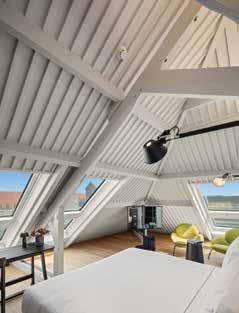
when they tell a story, recover traditions, and transform into contemporary language. And this is my commitment in each project: creating spaces with soul, where the design is not an end, but a means to feel emotion,” stresses the interior designer.”
Landscape architecture also has a word to say regarding tourist developments, and trends are integrated in concepts such as re-grounding, prizing integration into nature and local character, promoting sustainability, the creation of multifunctional spaces, prizing biodiversity and the creation of unique sensory experiences for users.
As Lydia las Casas, landscape architect and partner director at Broadway Malyan explains to us. “Developments are becoming more integrated into the natural landscape, using evergreen vegetation, creating spaces with more organic nature that provide authentic and relaxing experiences” while at the same time this approach is also “more sustainable by preserving fundamental natural resources such as soil and water, and fostering biodiversity.” Outdoor spaces become more versatile and multi-functional and can be used for different light and active recreation activities. According to the landscape architect, these outdoor spaces “create sensory experiences that involve the visitors, by using colour, textures, aromas, sounds, and flavours, creat-
Regulamento do AL: prometido, mas por cumprir?
LA Regulation: promised but yet to be fulfilled?
Em Outubro de 2024, o Governo aprovou o Decreto-Lei n.º 76/2024, transferindo para os municípios a responsabilidade de definir zonas de contenção para o Alojamento Local. A medida, muito debatida, surgiu como resposta à pressão do turismo sobre a habitação e prometia regulação local, equilibrada e célere com um prazo de 12 meses para cada câmara aprovar o seu regulamento.
Em Abril de 2025, Lisboa colocou uma proposta em consulta pública, prevendo proibição de novos registos em nove freguesias. Mas, em Junho, ainda não foi aprovada. Porto, Funchal, Albufeira ou Gaia continuam sem documentos oficiais publicados. A promessa era autonomia municipal e acção eficaz. O prazo corre, mas os regulamentos não chegam.
In October 2024, the government approved Decree-Law Nº 76/2024, transferring to municipalities the responsibility of defining areas of contention for Local Accommodation. The measure, which has been much debated, arose in response to the pressure of tourism on housing and promised local regulation, balanced and swift with a deadline of 12 months for each council to approve its regulations.
In April 2025, Lisbon came up with a proposal for public consultation, foreseeing a ban on new registrations in nine parishes. But in June, it had still not been approved. Porto, Funchal, Albufeira and Gaia still don’t have official documents published. The promise had been municipal autonomy and effective action. The deadline draws nearer, but the regulations have not arrived.
Water savings for all?
No Algarve, o Verão chega com alertas repetidos para a poupança de água. Suspensão da rega pública, contenção na agricultura, e apelos à consciência dos residentes.
Tudo isto enquanto os hotéis mantêm piscinas cheias, regas intensivas e, nos casos com campos de golfe, consumos que chegam a 500 mil litros por dia.
Em 2025, algumas barragens da região registaram níveis históricos de escassez: Odeáxere com 17% da capacidade em Fevereiro, Arade apenas a meio gás em Março. Ainda assim, não há sinais de travão no modelo turístico intensivo.
O contraste é claro: pede-se moderação a quem vive na região o ano inteiro, mas o sistema continua a privilegiar o consumo extremo de quem só cá fica uns dias.
Summer has arrived in the Algarve with repeated water saving warnings: hosepipe bans, protests in agriculture, and calls for residents to be aware.
All the while, hotels maintain full swimming pools, intense watering and, in cases with golf clubs, consumption that reaches 500 thousand litres per day.
In 2025, some reservoirs in the region registered historically low water levels: Odeáxere with a 17% capacity in February, and Arade was only half full in March. Nevertheless, there are no signs of putting the brakes on the intensive tourism model.
The contrast is clear: moderation for those living in the region all year round is called for, but the system continues to prioritise those who only stay there for a few days.


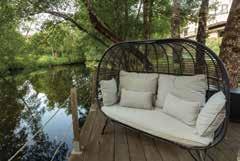
ing a pleasant and stimulating atmosphere that is related to memory, history, traditions and the specific traditions and values of that place/region, creating a product with significant cultural and emotional value.”
Nature and art are equally invading the interior and exterior spaces of tourism developments.
Lydia las Casa thinks that outdoor spaces and vegetation are more integrated in interior architecture and design through Biophilia: “The boundary between interior and exterior spaces has become blurred, and natural elements have been integrated in concepts.”
And then art, always present in gardens, and in urban spaces as key elements, is gaining a new scale and an increasing presence in landscape architecture and interior design, according to the specialist, that these days are part of speciality fields such as art curation. “The value of natural and artistic beauty brings real value to the experience of the guest, creating more authentic and personalised experiences, beyond prizing local culture and sustainability.”
We don’t have a ‘crystal ball’ to forecast what will be the next path that tourist shapes and spaces will follow.
But Nini Andrade Silva tells us that if she were to hazard a guess, she would say that the future of tourist interiors would involve “the radical bespoke experience but anchored in a more stringent collective and environmental awareness”.
Which is why we will see a “growing appreciation of the immaterial: memory, silence, the sensation of shelter”, where design will evolve into “an even more sensorial and responsive language’, where technology will be invisible but omnipresent, at the service of comfort and sustainability” and interiors “will not longer be just physical spaces - they will be curated, immersive and almost theatrical experiences.” And then luxury will “continue to change: it will become increasingly more invisible but deeply felt.”
In essence, the next big step will be a return to origins, but with eyes on the future. Created with truth, purpose, and soul.
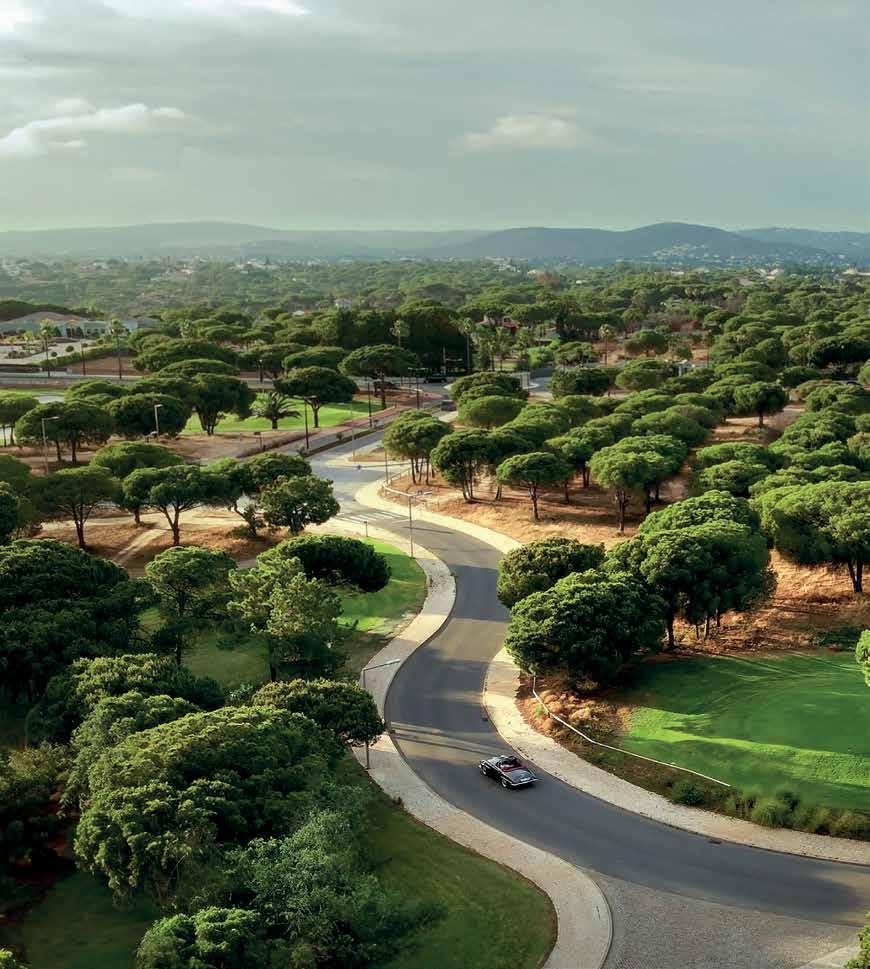
Vale do Lobo
A new era for the Algarve’s Iconic Resort
O resort de Vale do Lobo, no Algarve, é há muito reconhecido como sinónimo de qualidade, prestígio e um estilo de vida de excelência. Agora, inicia-se um novo capítulo na sua história, marcado por um ciclo de investimento ambicioso e pelo lançamento das
The Residences Vale do Lobo, um projeto que redefine o futuro do resort e reforça a sua posição de destaque no mercado imobiliário da região.
The Algarve’s renowned Vale do Lobo resort has long been synonymous with luxury, quality and prestige. Now, an exciting new era of investment is showcasing the future of property in the Algarve, with the launch of the new Real Estate Development, The Residences Vale do Lobo.
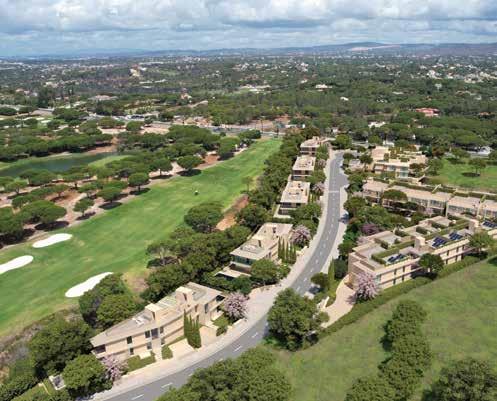
Nos últimos dois anos, Vale do Lobo beneficiou de um plano estratégico de investimento que veio elevar significativamente a sua oferta. Desde 2023, o resort está sob a gestão da Kronos Homes, que consolidou a sua presença no Algarve através da aquisição de um portefólio relevante de activos imobiliários e turísticos, numa operação liderada pelo consórcio Davidson Kempner. No centro desta operação está Vale do Lobo, cuja gestão e reposicionamento estratégico têm sido conduzidos pela Kronos Homes, num processo que abrange melhorias estruturais, diversificação de serviços e a introdução de novas comodidades, reforçando a proposta de valor do resort.
O lançamento das The Residences Vale do Lobo marca o início de uma nova fase de desenvolvimento imobiliário, plena de entusiasmo, visão e oportunidades. Este projecto exclusivo alia o melhor do design contemporâneo a um estilo de vida excepcional, que há mais de seis décadas distingue Vale do Lobo a nível internacional. Com assinatura dos arquitectos da Broadway Malyan, The Residences privilegiam a luz natural e a integração harmoniosa com a envolvente, onde a vegetação mediterrânica e os lagos reforçam o carácter sereno e natural do espaço.
A colecção com a marca Vale do Lobo, é com -
posta por 44 unidades — 25 amplos apartamentos, dez moradias geminadas e nove moradias em banda — situadas numa localização privilegiada junto aos fairways do emblemático Royal Golf Course. Os residentes terão acesso a diversas piscinas, comuns e privadas, e a um conjunto de serviços exclusivos que asseguram uma experiência de vida incomparável, onde o conforto, o bem-estar e os momentos de lazer se encontram em perfeita sintonia.
Todo o investimento no resort traduziu-se ainda na renovação e modernização de várias infraestruturas. Destaque para a remodelação da Academia de Ténis, que conta agora com 13 campos de ténis e seis de padel, um novo centro de fitness, piscina, loja especializada e áreas de lazer. Os dois campos de golfe de 18 buracos beneficiaram igualmente de melhorias significativas, complementadas pela abertura de uma nova loja de golfe, onde se encontram as marcas mais prestigiadas do sector.
Na vertente gastronómica, Vale do Lobo reforçou a sua oferta com a abertura de seis novos restaurantes nos últimos dois anos, proporcionando experiências únicas que viajam por sabores e tradições de várias geografias.
Esta oferta exclusiva, aliada a um estilo de
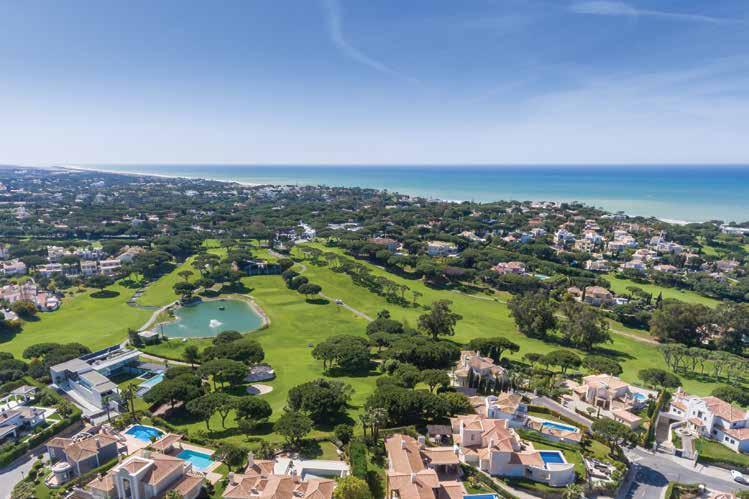
vida verdadeiramente distintivo, atrai compradores de várias nacionalidades. The Residences Vale do Lobo representam o primeiro projecto imobiliário lançado no resort em duas décadas, sucedendo a um período notável de vendas imobiliárias de lotes de terreno, nestes últimos dois anos. Cerca de 30% destas vendas foram realizadas a clientes já proprietários no resort, principalmente portugueses e ingleses, evidenciando a fidelização e valorização contínua dos investimentos imobiliários no emblemático empreendimento.
Alda Filipe, partner da Kronos Homes e administradora de Vale do Lobo, sublinha: “O interesse que temos registado nas The Residences Vale do Lobo demonstra de forma inequívoca a forte procura que esta nova fase do resort está a gerar. Vale do Lobo é um destino que atravessa gerações, oferecendo um estilo de vida verdadeiramente inigualável, muito valorizado por compradores de todo o mundo.”
Com 450 hectares de paisagem natural des -
lumbrante e dois quilómetros de praia de areia dourada, Vale do Lobo oferece uma tranquilidade ímpar e experiências memoráveis. As suas infraestruturas e serviços permitem que cada família personalize a sua estada, seja de férias ou residência permanente.
Over the past two years, a strategic programme of enhancements has elevated that lifestyle even further. The resort has been under the ownership and operation of Kronos Homes since 2023, when the Iberian developer significantly strengthened its portfolio in the Algarve with the acquisition of a significant collection of real estate and tourism assets, through a consortium led by Davidson Kempner. Vale do Lobo was the jewel in the crown of that acquisition, with Kronos Homes operating the resort ever since, overseeing everything from a new brand positioning to strategic enhancements. The firm has brought a range of retail outlets, services and facilities at the resort in-house over
Este projecto exclusivo alia o melhor do design contemporâneo a um estilo de vida excepcional, que há mais de seis décadas distingue Vale do Lobo a nível internacional.
The Residences blend the best of contemporary property design with the outstanding lifestyle that has garnered global attention for Vale do Lobo for more than 60 years.”
Com 450 hectares de paisagem natural deslumbrante e dois quilómetros de praia de areia dourada, Vale do Lobo oferece uma tranquilidade ímpar e experiências memoráveis.
Set in 450 hectares of incredible natural landscape and with a 2 km stretch of pristine beachfront, Vale do Lobo offers a unique sense of serenity.”
the past two years, as well as adding a string of new and enhanced amenities. The creation of The Residences Vale do Lobo marks the exciting next phase of Kronos Homes’ strategy for Vale do Lobo.
The Residences blend the best of contemporary property design with the outstanding lifestyle that has garnered global attention for Vale do Lobo for more than 60 years. The limited collection of 44 homes presents 25 spacious apartments, ten linked villas and nine elegant townhouses, with a selection of communal and private swimming pools. The beautifully designed homes are flooded with light, conceived by architects Broadway Malyan to foster a deep sense of connection with the surrounding greenery and lakes.
Occupying a prime position beside the fairways of the famous Royal Golf Course, The Residences have the best of Vale do Lobo’s incredible lifestyle on their doorstep. The breadth of that lifestyle, which encompasses everything from indulgent relaxation and fine dining to active outdoor sports, is a key
factor behind the strength of Vale do Lobo’s reputation.
The considerable investment in Vale do Lobo has delivered a host of new facilities, including an enhanced Tennis Academy that now has 13 tennis courts and six padel courts, as well as a new fitness centre, decked area, swimming pool and pro shop. Enhancements have also focused on Vale do Lobo’s two 18-hole golf courses, where players can enjoy exceptional experiences yearround. The courses are complemented by a new golf boutique, with the best brands and state-of-the-art equipment.
Consolidating its position in the gourmet dining market, Vale do Lobo has opened six impressive new restaurants over the past two years. All focus on experiential dining, immersing visitors in flavours from around the world.
The new restaurants and other amenities cement Vale do Lobo’s position as the Algarve’s leading luxury resort. The enticing lifestyle and outstanding property of-

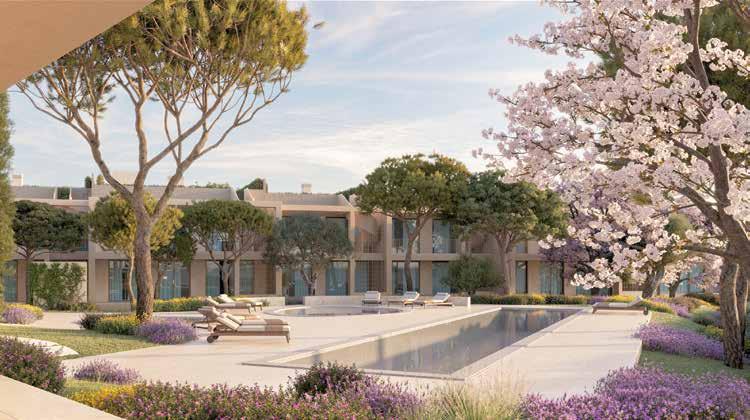
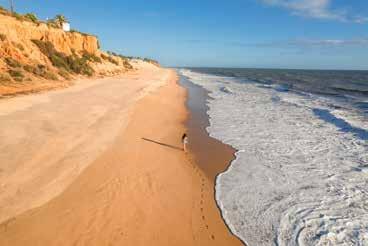
fering are drawing in buyers from around the globe, as The Residences Vale do Lobo launch to the open market. The first homes to be built by the resort in two decades, they follow an enormous success in sales of plots of land, in the past two years. 30% of transactions were by Portuguese and English clients, who already had investments in the resort, emphasising its enduring appeal and solid investment.
Alda Filipe, Partner at Kronos Homes and Vale do Lobo Board Member, comments: “The interest that we’ve already seen in

The Residences Vale do Lobo highlights the strength of buyers’ appetite for the new era of real estate at this legendary resort. Vale do Lobo’s unique appeal spans generations, delivering an incomparable lifestyle sought after by property buyers around the world.” Set in 450 hectares of incredible natural landscape and with a 2 km stretch of pristine beachfront, Vale do Lobo offers a unique sense of serenity. The extensive facilities at the resort mean every family can personalise their time there to suit their tastes, creating cherished memories.


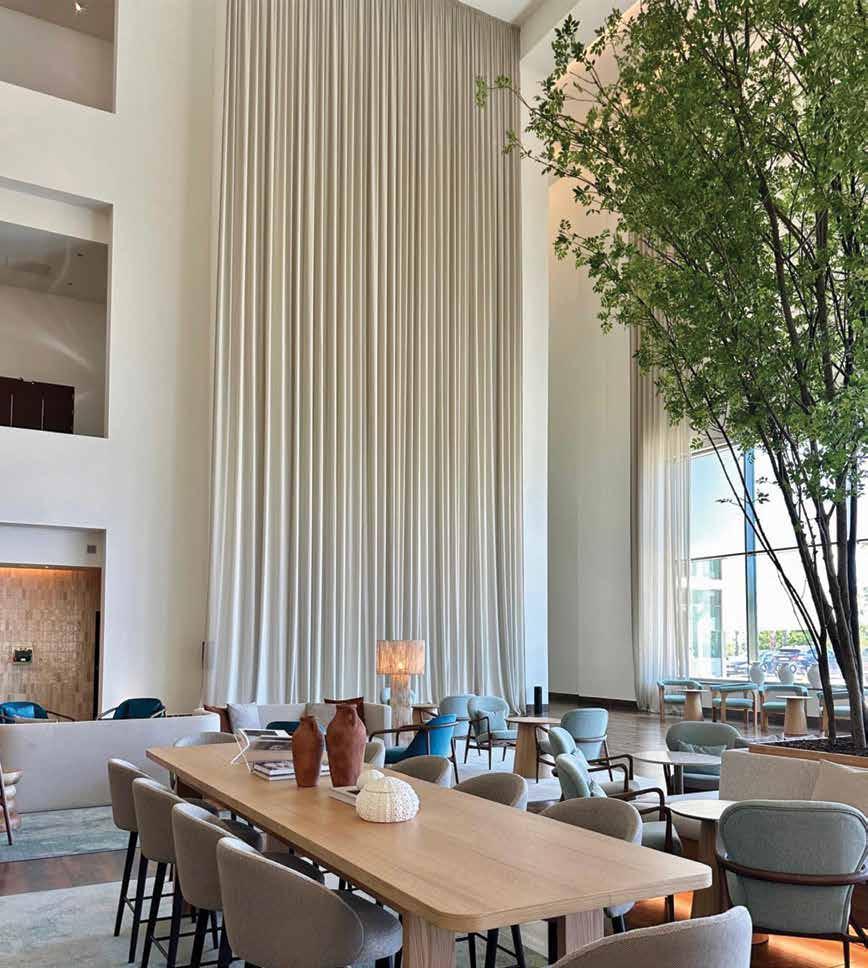
Broadway Malyan
Tourism boom in Portugal transforms hotel offer
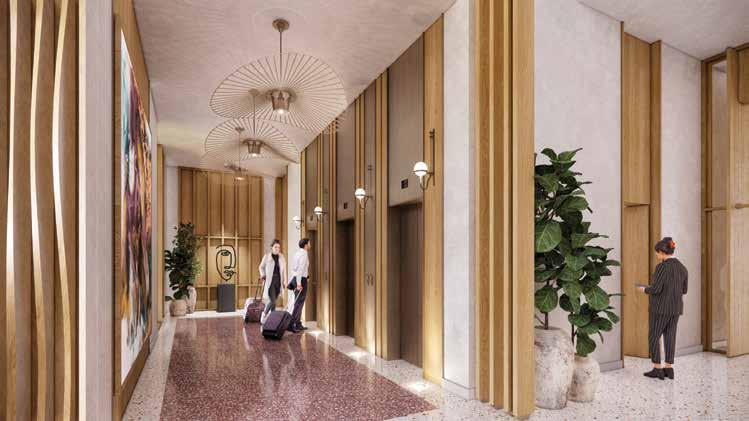
O sector do turismo em Portugal está a viver um momento extraordinário, com números recorde de visitantes e uma mudança dinâmica nos perfis dos viajantes que chegam ao país. Portugal’s tourism sector is riding an extraordinary wave, with record visitor numbers and a dynamic shift in the types of travellers arriving.
Embora o Algarve continue a ser um destino preferencial, cidades como Lisboa e Porto tornaram-se autênticos pontos de atracção a nível global, captando um público mais vasto e diversificado do que nunca — incluindo visitantes de longa duração e trabalhadores remotos.
Segundo Margarida Caldeira, responsável pela área de hotelaria e directora do ateliê de Lisboa da Broadway Malyan, esta mudança está a impulsionar uma transformação no mercado imobiliário hoteleiro português.
“Estamos a assistir a um afastamento do modelo tradicional de resort altamente sazonal”, explicou. “Há uma procura crescente por alojamento disponível durante todo o ano, que ofereça mais opções e flexibilidade — desde hotéis de cinco estrelas de luxo até soluções de gama média mais acessíveis.”
Um dos aspectos centrais desta evolução é a crescente presença de marcas internacionais de hotelaria. “Este é talvez o maior fator de mudança que temos observado nos últimos anos”, acrescentou Margarida.
“Os operadores globais estão a investir fortemente tanto em novas construções como na requalificação de propriedades já existentes, o que está a elevar a qualidade e a consistência da oferta em todo o país.”
A Broadway Malyan tem estado na linha da frente desta transformação, colaborando com marcas de referência no desenvolvimento de projectos que respondem às novas expectativas dos viajantes. Em Lagos, por exemplo, o ateliê desenhou dois hotéis adjacentes numa localização privilegiada junto à zona ribeirinha, entre a marina e a estação ferroviária: o hotel de cinco estrelas Lagos Marina Hotel, integrado na Curio Collection da Hilton, e o Hilton Garden Inn Lagos, de quatro estrelas.
Mais a sul, no Algarve, a Broadway Malyan está prestes a concluir três novos hotéis no Salgados Beach Resort, cada um com padrões distintos associados às marcas Westin e Marriott. “É uma resposta a um público mais internacional”, disse Margarida. “Viajantes da Ásia e da América do Norte, em particular, procuram muitas vezes a familiaridade e a confiança que as marcas globais oferecem.”
Esta tendência não se limita a novas construções. Está também em curso uma transformação igualmente significativa através da requalificação de hotéis familiares com longa tradição. Estas unidades estão a estabelecer parcerias com operadores internacionais para garantir a sua sustentabilidade futura. Um exemplo emblemático é o icónico Hotel Mun-
dial, em Lisboa, recentemente redesenhado pela Broadway Malyan, estando a reabertura completa prevista para o final deste ano — um novo capítulo na sua longa história.
Margarida Caldeira acredita que este padrão irá moldar o mercado imobiliário turístico português nos próximos anos.
“Estamos a entrar numa era dourada, não apenas em termos de número de visitantes, mas também na maturidade do setor”, afirmou. “Trata-se de construir uma oferta hoteleira mais sustentável e disponível ao longo de todo o ano — que saiba equilibrar a tradição com a inovação, e o charme local com padrões internacionais.”
While the Algarve remains a perennial favourite, cities like Lisbon and Porto are now global hotspots, attracting a wider and more diverse demographic than ever before - including long-term visitors and remote workers.
According to Margarida Caldeira, Head of Hospitality and Director of Broadway Malyan’s Lisbon studio, this shift is driving a transformation in the country’s hospitality real estate.
“We’re seeing a move away from the traditional, highly seasonal resort model,” she explained. “There’s a growing demand for year-round accommodation that offers more choice and flexibility - from luxury five-star hotels to more accessible mid-market options.”
A key feature of this evolution is the increasing presence of international hospitality brands. “This is perhaps the most significant change
we’ve seen in recent years,” added Caldeira. “Global operators are investing heavily in both new-build developments and the repositioning of existing properties, and that’s elevating the quality and consistency of the offer across Portugal.”
Broadway Malyan has been at the forefront of this shift, working with leading brands to deliver new developments that respond to changing traveller expectations. In Lagos, for instance, the practice has designed two adjacent hotels on a prime waterfront site between the marina and train station: the fivestar Lagos Marina Hotel, part of Hilton’s Curio Collection, and the four-star Hilton Garden Inn Lagos.
Further south in the Algarve, Broadway Malyan recently completed three new hotels at the Salgados Beach Resort, each aligned with distinct brand standards under the Westin and Marriott banners. “It’s a response to a more international clientele,” Caldeira said. “Travellers from Asia and North America, in particular, often look for the familiarity and assurance that global brands provide.” This trend is not limited to new construction. An equally important transformation is underway in the repositioning of long-established, family-run hotels. These properties are embracing partnerships with international operators to secure their future. A prime example is the iconic Hotel Mundial in Lisbon, which Broadway Malyan has recently redesigned with the refurbished hotel set to fully
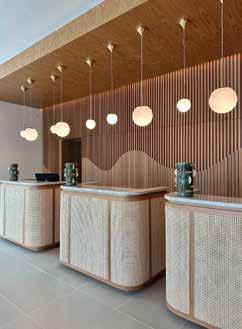
reopen later this year, marking a new chapter in its storied history.
Caldeira believes this pattern will define Portuguese tourism real estate in the coming years.
“We’re entering a golden age, not only in terms of visitor numbers but in the maturity of the sector itself,” she said. “It’s about building a more sustainable, year-round hospitality offer - one that balances tradition with innovation, and local charm with international standards.”



Estratégia e Consultoria de Comunicação; Gestão de Redes Sociais;
Design de Comunicação Empresarial; Podcasts; E G D P O P
Organização de Eventos; Programa de Sustentabilidade.
Go Green. Think Green. Be Green.

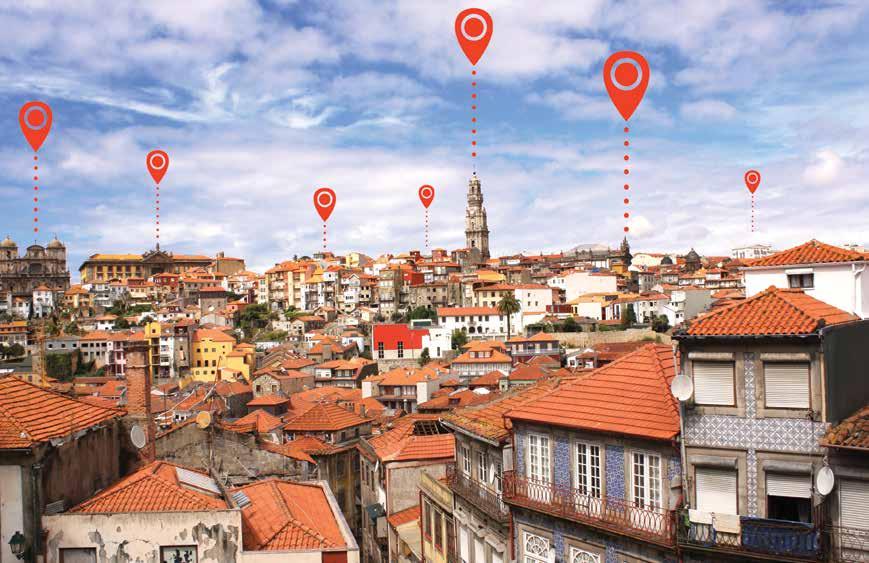

O Porto está na rota dos profissionais da tecnologia. Há aspectos que limitam o seu crescimento, sobretudo ao nível do alojamento, mas a autarquia diz estar atenta. Porto is on the map for technology professionals. There are aspects that limit its growth, particularly at the accommodation level.
O Porto tem consolidado, nos últimos anos, a sua posição como cidade inteligente e inovadora, destacando-se em domínios como a tecnologia, a mobilidade urbana e o apoio ao empreendedorismo.
Esta realidade é visível na realização de um número crescente de eventos nestas áreas, confirmando que a cidade está na rota dos profissionais da tecnologia.
Na edição recente dos Meet-Ups Porto — um ciclo de encontros promovido pelo Pelouro do Turismo e Internacionalização da Câmara Municipal do Porto, com o apoio do The Social Hub Porto —, os profissionais das áreas do turismo, hotelaria e restauração foram convidados a reflectir, de forma descontraída e construtiva, sobre o futuro do turismo na cidade, promovendo a partilha de ideias, experiências e soluções inovadoras para um sector em constante transformação.
Com o tema “Porto, Destino Inteligente – Desafios e Oportunidades para o Turismo”, a ideia deixada é que a cidade deverá tirar partido e promover a fixação de talento, através de projectos com benefício para a cidade e o sector do turismo. “Poderão identificar-se projectos no âmbito da sustentabilidade como Cidade Inteligente (eficiência energé -
tica, gestão de circuitos turísticos, gestão integrada de transportes), Cultura (galerias de arte com recurso à realidade aumentada) e Empregabilidade (utilização de ferramentas que permitam o acesso a oportunidades de trabalho de forma mais rápida, eficiente e descomplicada)”, destaca Nuno Silva, director do The Social Hub Porto.
Catarina Santos Cunha, vereadora da autarquia do Porto, com o pelouro do Turismo, refere que o município tem vindo a investir de forma estratégica na promoção de soluções inovadoras que posicionem a cidade como um destino de turismo inteligente. “A digitalização constitui um dos pilares centrais desta transformação, com projectos como o Explore Porto, o Shop in Porto e os Bairros Comerciais Digitais a reflectirem o compromisso municipal com a modernização tecnológica, promovendo uma experiência mais eficiente e enriquecedora para os visitantes”, refere. Paralelamente, tem sido dada especial atenção ao estímulo do sector privado, em particular no domínio económico.
A vereadora destaca que o apoio à internacionalização de startups, a colaboração com instituições académicas e a promoção de ecossistemas empresariais dinâmicos são
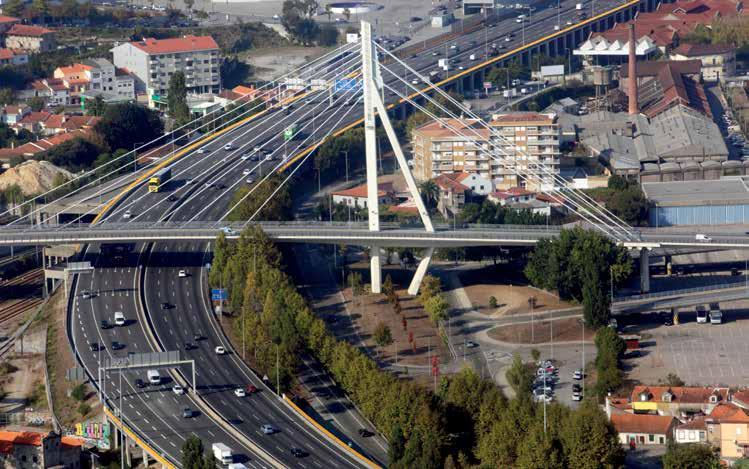
componentes essenciais desta estratégia, contribuindo para a atração de talento e investimento. “Este esforço tem valido ao Porto a distinção, por quatro anos consecutivos, no ranking Cidades Europeias do Futuro, publicado pelo Financial Times”, alerta Catarina Cunha.
Resolver lacunas
A cidade oferece, actualmente, uma significativa rede de alojamento, dirigida tanto a visitantes profissionais como a empresas, com diversas unidades hoteleiras a disponibilizarem espaços de trabalho adaptados a este segmento.
Contudo, trata-se ainda de uma oferta insuficiente, que pode limitar o crescimento no futuro. No decorrer do Meet-Up, que teve lugar no The Social Hub — espaço que integra um hotel, coworking, restauração, salas de reuniões e eventos —, “ficou evidente que a única forma de colmatar esta e outras lacunas passa pelo envolvimento dos diversos stakeholders nos processos e projectos da cidade”, frisa Nuno Silva. Ou seja, será necessária uma comunicação mais eficiente, inte -
grada e desburocratizada.
Catarina Santos Cunha frisa que, no futuro, haverá um crescimento expressivo desta oferta: “Em 2024, foram submetidos à Câmara Municipal do Porto 122 processos para novas unidades de alojamento, o que se traduzirá em cerca de 11 mil camas adicionais, permitindo antecipar uma evolução positiva da oferta hoteleira da cidade e, consequentemente, da sua capacidade de alojamento”. Paralelamente, adianta, verifica-se um aumento de espaços de coworking, impulsionado pela iniciativa privada e pela contínua reabilitação urbana. Este processo tem favorecido a fixação de um público mais profissional em zonas como o Bonfim e a Boavista, que integram habitação, escritórios e serviços.
Porto has consolidated its position as an intelligent and innovative city in recent years, standing out in domains such as technology, urban mobility, and support for entrepreneurialism.
This reality is visible in the growing number of events in these areas, confirming that the city is on the map for technology professionals.
At the recent edition of Meet-Ups Porto - a cycle of meetings promoted by Porto City Council’s Department of Tourism and Internationalisation, with the support of The Social Hub Porto -, professionals in the areas of tourism, hospitality, and catering were invited to reflect, in a relaxed and constructive manner about the future of tourism in the city, fostering the sharing of ideas, experiences and innovative solutions for a sector that is in constant transformation.
With the theme ‘Porto, Smart DestinationChallenges and Opportunities for Tourism,’ the idea left was that the city should take the lead and encourage talent retention through projects that are beneficial for the city and the tourism sector. “Projects in the field of sustainability can be identified as Smart City (energy efficiency, management of tourist routes, integrated transport management), Culture (art galleries using augmented reality) and Employability (use of tools that allow access to job opportunities more quickly, efficiently and without complication)”, highlights Nuno Silva, director of The Social Hub Porto.
O Porto tem consolidado, nos últimos anos, a sua posição como cidade inteligente e inovadora, destacando-se em domínios como a tecnologia, a mobilidade urbana e o apoio ao empreendedorismo. Porto has consolidated its position as an intelligent and innovative city in recent years, standing out in domains such as technology, urban mobility and support for entrepreneurship.”
Catarina Santos Cunha, a Porto City councillor who heads Tourism, mentions that the municipality has strategically invested in promoting innovative solutions that position Porto as a smart tourism destination. “Digitalisation is one of the central pillars of this transformation, with projects such as Explore Porto, Shop in Porto, and Digital Shopping Neighbourhoods reflecting the municipality’s commitment to technological modernisation, promoting a more efficient and enriching experience for the visitors,” she says. At the same time, special attention has been given to stimulating the private sector, in particular in the economic domain.
The councillor pointed out that the support for the internationalisation of start-ups, the collaboration with academic institutions and the promotion of dynamic business ecosystems are essential components of this strategy, contributing to talent and investment attraction. “This effort has won Porto the distinction of being among the Financial Times ‘European Cities of the Future’ ranking for the fourth year running.
The city currently offers a significant network of accommodation aimed both at
professional visitors and companies, with diverse hotels and workspaces adapted to this segment.
That said, the offer is insufficient that could limit future growth. During the Meet-Up that took place at The Social Hub - a space that is integrated in a hotel with coworking, restaurants, meeting and events rooms - “it was evident that the only way to fill these and other gaps was to involve the various stakeholders in city processes and projects”, says Nuno Silva. In other words, it would be necessary to provide more efficient, integrated and less bureaucratic communication.
Catarina Santos Cunha adds that in the future there will be an expressive growth in this offer: “In 2024 122 planning applications for new accommodation units were submitted to Porto City Council, which means 11,000 extra beds and enough hotel accommodation in the city and, as a result, increased accommodation capacity.”
At the same time, he added that there has been an increase in coworking, driven by private initiative and continued urban regeneration. This process has favoured the rooting of a more professional public in areas such as Bonfim and Boavista that integrate housing, offices, and services.
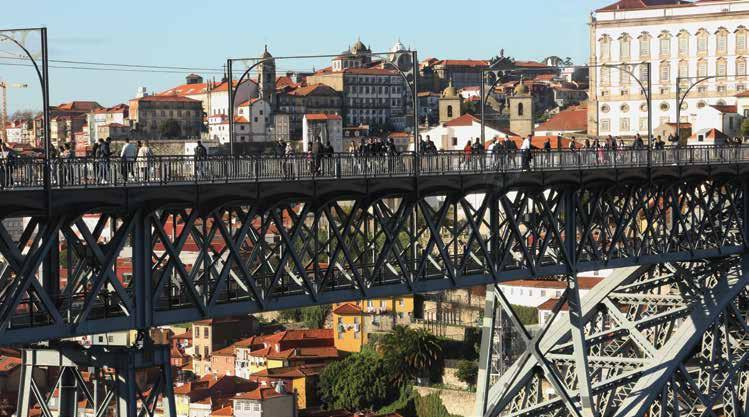
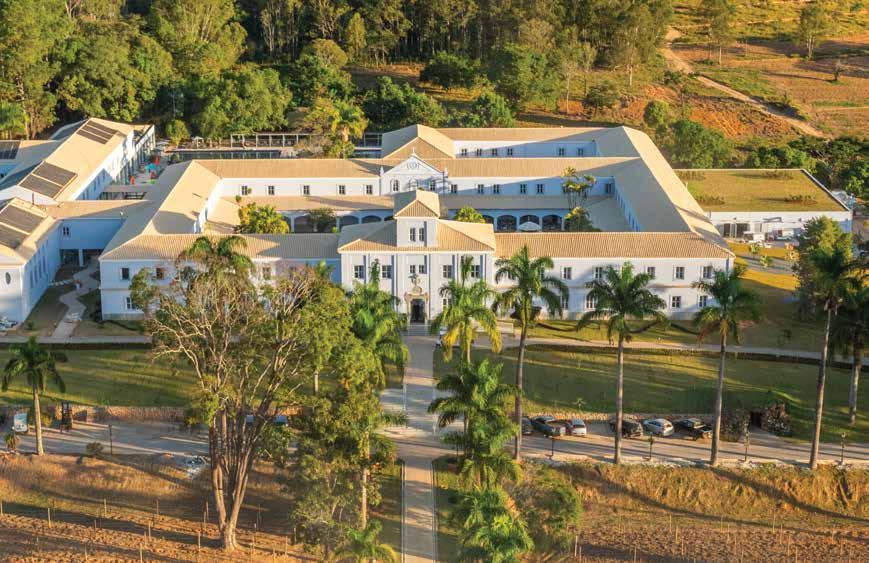
Grupo Vila Galé
Vila Galé Group
“Brasil é o nosso destino de investimento estrela”
“Brazil is our star investment destination”
Nunca fizeram contas ao investimento que já fizeram no Brasil, mas já somam 13 hotéis naquele país. Gonçalo Rebelo de Almeida, administrador do Grupo Vila Galé, fala-nos da operação no “país-irmão”, das novas aberturas e onde pensam investir no futuro.
They’ve never counted costs when it comes to investment, but they’ve already got 13 hotels in Brazil. Gonçalo Rebelo de Almeida, the CEO of Grupo Vila Galé chats with us about its operation in Brazil, the new openings and where they’re thinking about investing in the future.
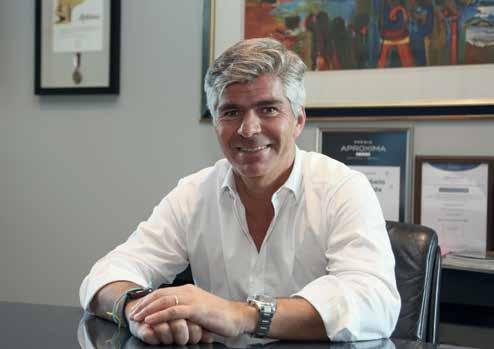
Em 2001 abriram a vossa primeira unidade hoteleira em Fortaleza já lá vão 24 anos. Foi natural dar este primeiro passo e, depois, continuar a investir no país?
Na altura surgiu um conjunto de oportunidades que nos fizeram avançar, nomeadamente constatámos que a TAP estava a alargar as suas rotas para o Brasil e existiam vários investimentos de portugueses no país. Quando olhámos para o Brasil sabíamos que tinha uma série de atractivos, como o clima, as praias e uma paisagem natural, gastronomia, música, cultura, ou seja, tinha todos os ingredientes para ser um destino turístico mais relevante. E quando surgiu a oportunidade de comprar um edifício, que não tinha sido concluído por processo de falência e transformá-lo em hotel, não hesitámos.
O facto de em Portugal já termos, nessa altura, uma posição sólida com cerca de volta de 10 hotéis permitiu-nos analisar outras oportunidades de expansão.
De lá para cá, investiram em cidades, mas também no interior, em zonas turísticas, centros históricos. São os Estados brasileiros que vão ter com o Vila Galé para aliciar à construção de um hotel ou resort, ou é ao contrário, o Vila Galé tem os seus “olheiros” e sabe onde quer investir?
Numa primeira fase, fomos nós que procurámos oportunidades de investimento. A seguir a Fortaleza, em 2001, começámos a olhar para Salvador da Baía e Rio de Janeiro, ou seja, para
cidades que estavam identificadas do ponto de vista turístico. No hotel de Salvador começámos com um contrato de management e só dois anos depois é que o comprámos; e no Rio foi o projecto que mais tempo demorámos a concretizar, pois só viemos a ter o hotel em 2014. Por essa altura, começámos também a olhar para a cidade de São Paulo, que veio a concretizar-se em Abril em 2020.
Obviamente, a partir do momento em que se começa a falar no mercado de um grupo a querer expandir no Brasil, começam também a aparecer oportunidades de privados a vender terrenos, hotéis e outros.
Numa fase mais recente surgiram muitos municípios e até mais governos de Estado a quer captar investimentos para desenvolver resorts nos respectivos municípios. Foi o que aconteceu em Rio Grande do Norte ou em Alagoas.
Tem noção de quantos milhões já investiram no Brasil?
Nunca fizemos as contas ao total dos investimentos. Até 2010, numa inicial de investimento, houve aporte de capital que foi de Portugal para lá. Numa fase posterior, a expansão no Brasil tem sido feita à custa dos resultados brasileiros que são reinvestidos no próprio país.
No ano passado tivemos receitas de cerca de 110 milhões de euros, ou seja, tivemos um crescimento de 6% comparativamente a 2023. E este ano a expectiva é que vamos continuar a crescer.
No ano passado lançaram o primeiro hotel da linha Collection no Brasil. Como está a decorrer a operação do Vila Galé Collection Sunset Cumbuco, em Cumbuco, no Ceará?
Ficámos com uma imagem muito colada aos grandes resorts do “all inclusive”, para famílias e com muita oferta de restauração e muita animação, pelo que esta operação está aquém das nossas expectativas.
Temos a necessidade de explicar aos clientes que este é um produto diferente, que é um boutique hotel, mais pequeno, mais requintado, com restaurantes à la carte. Mas é preciso frisar que foi inaugurado no final de 2024, pelo que ainda é prematuro fazer balanços, e acredito que o hotel está a fazer o seu caminho.
Este ano somam mais dois hotéis à vossa lista de unidades no Brasil.
Estamos a fazer o mesmo percurso que fizemos em Portugal, procurar inovar nas localizações e ir para cidades menos óbvias. No mês de Maio abrimos o Vila Galé Collection Ouro Preto, em Minas Gerais, uma unidade que se insere numa cidade histórica. E em Outubro será a vez do Vila Galé Collection Amazónia-Belém, no Pará. Temos grandes expectativas para
ambos os hotéis, penso que são operações que vão correr muito bem.
Estas e as futuras apostas no Brasil são edifícios históricos. É mais fácil reabilitar lá ou cá?
A nossa primeira experiência, no Brasil, foi no Rio de Janeiro com um antigo edifício que tivemos de recuperar, mas que também tinha uma ala nova. Seguiu-se São Paulo com a conversão de um edifício de escritórios em hotel. Não foram experiências complicadas. No Ouro Preto, um edifício classificado como património histórico, já existiu um maior controlo e algumas exigências.
Mas diria que genericamente é mais rápido aprovar os projectos no Brasil do que em Portugal. Isto porque, no nosso País construímos um hotel entre 18 a 24 meses, mas levamos dois anos a que seja aprovado. Já no Brasil o licenciamento acontece em menos de um ano. Há aqui, claramente, algo de errado em Portugal, pois demoramos muito mais tempo a aprovar um projecto do que a fazê-lo, e há demasiadas instituições a analisar e a intervir.
O que falta para que mais portugueses viajem para o Brasil e pernoitem num dos hotéis do Vila Galé?
o ano passado tivemos receitas de cerca de 110 milhões de euros, ou seja, tivemos um crescimento de 6% comparativamente a 2023 (no Brasil). E este ano a expectiva é que vamos continuar a crescer.
Last year we had revenues of around 110 million euros, in other words we had 6% growth on 2023 (In Brazil)”. “And this year we expect to continue to grow.”

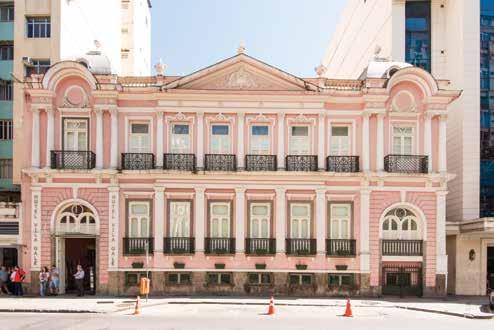

Os portugueses, na nossa análise genérica, gostam do Brasil, havendo períodos do ano mais fortes: o réveillon, as férias de Verão e a Páscoa.
Mas a operação do Brasil depende dos voos da TAP. Penso que se houvesse mais voos e com preços mais competitivos, mais portugueses iriam para o Brasil. Os portugueses estão também agora a descobrir um Brasil do interior, da história e património e não apenas as zonas costeiras de praia. Se esta tendência se mantiver penso que o número de portugueses irá crescer nos próximos anos.
As próximas aberturas vão ser o Vila Galé Collection Coruripe e Vila Galé Nep Kids, em Alagoas. Quais as vossas expectativas para estas unidades e que novos projectos vão seguir-se?
As obras de ambos os hotéis vão começar agora, pelo que só deverão abrir no final de 2026/ início de 2027.
O conceito Nep Kids vai ser a nossa primeira experiência no Brasil vocacionada para as crianças e na mesma área vamos ter também um Collection. São dois hotéis distintos, um com 354 quartos e o outro com aproximada-
mente 150 quartos. Vamos também recuperar edifícios no centro histórico de São Luiz do Maranhão.
Depois destes hotéis, ainda estamos a ver o que se segue, até porque encontramo-nos numa fase em que somos muito assediados para o desenvolvimento de projectos.
Temos de ser ponderados, pois este ano abrimos dois hotéis em Portugal e mais dois no Brasil. No nosso País temos na calha as unidades do Paço Real de Caxias, de Penacova, Cardiga – Vila Galé Collection Tejo e do Hotel Vila Galé – Mirandum. E temos ainda uma nova unidade em Lisboa, que ainda não posso anunciar a localização e o tipo de projecto, muito embora esteja mais ou menos fechado.
O Brasil é o nosso destino de investimento estrela, temos 12 hotéis em funcionamento e mais quatro previstos: o Vila Galé Collection São Luís e Vila Galé Collection Maranhão, Vila Galé Coruripe Alagoas – Resort Hotel, Beach & Spa e o Vila Galé Nep Kids integrado no mesmo terreno do Vila Galé Coruripe Alagoas – Resort Hotel, Beach & Spa.
Além destes quatro novos hotéis, estamos a analisar também cidades como Santa Catarina e Belo Horizonte. Em Cuba vamos assumir a gestão de mais três unidades: Havana, Varadero e Cayo Santa Maria.
Temos, pois, um movimento grande de obras para os próximos dois anos e pelo caminho, sem pressa, iremos analisar novas oportunidades. Até ao horizonte de 2030 estamos, felizmente, cheios de trabalho.
In 2001 you opened your first hotel in Brazil in Fortaleza and 24 years have gone by. Was it natural to take this first step and later to continue investing in the country?
Several opportunities arose at the time that made us advance, namely we knew that TAP was increasing its routes to Brazil and there were several Portuguese investments in the country.
When we looked at Brazil, we knew it had a range of attractive features, such as the climate, the beaches and natural landscapes, cuisine, music, and culture. In other words, all the ingredients to be a most attractive tourism destination. And when the opportunity arose to buy a building, that had not been completed because of a bankruptcy case, and turn it into a hotel, we didn’t hesitate.
The fact that we had a solid position in Portugal at the time with around 10 hotels enabled us to look at other opportunities for expansion.


To date you’ve invested in cities, but also in the country’s interior in tourist areas and historic centres. Do the Brazilian States approach you to build a hotel or resort, or is it the other way around, with Vila Galé on the ‘lookout’ for places and knowing where it wants to invest?
In the first phase we were the ones who were on the lookout for investment opportunities. After Fortaleza, in 2001 we began to look at Salvador da Bahia and Rio de Janeiro, cities that were identified for tourism. With the Salvador hotel we started off with a management contract and then two years later we bought it; and in Rio that was the project that took the most time to get off the ground and we only got a hotel in 2014. At that time, we also began to look at São Paulo where we acquired a hotel in April, 2020.
Obviously, the moment you start talking in the market about a group wanting to expand to Brazil, opportunities start to appear from private entities wanting to sell parcels of land, hotels, or other things.
In a more recent phase, many municipalities
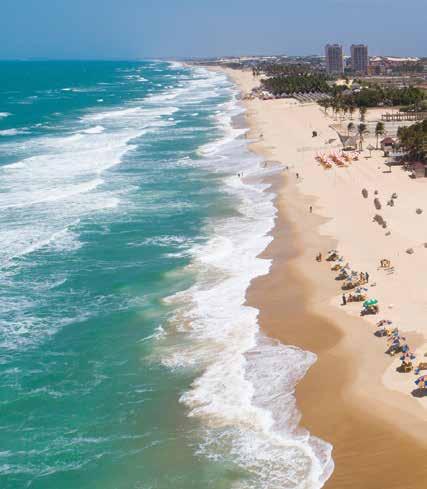
and even State governors cropped up wanting to attract investments to develop resorts in their respective municipalities. A case in point was Rio Grande do Norte and Alagoas.
Have you any idea of how many millions you’ve now invested in Brazil?
We’ve never totted up our total investment.
To 2021 in an initial investment a grand quantity of capital was transferred from Portugal to there. In a later phase the expansion in Brazil had been made at the cost of the profits we made in Brazil that were reinvested in the country itself.
Last year we had revenues of around 110 million euros, in other words we had 6% growth in 2023, and we expect to continue to grow.
Last year you launched the first hotel in your Collection range in Brazil. How is the Vila Galé Collection Sunset Cumbuco, operation in Cumbuco, Ceará going?
We’ve been very much associated with an image of ‘all-inclusive resorts’ for families with a lot of offer in restaurants and entertainment,
therefore this operation has exceeded our expectations. We’ve needed to explain to our clients that this is a different product, that it is a smaller but stylish boutique hotel with à la carte restaurants.
Although the hotel opened in late 2024, it’s too soon to evaluate its success, but it seems to be establishing itself well.
This year you’ve added two more hotels to your list of hotels in Brazil.
We’re taking the same route that we took in Portugal, seeking to innovate in the locations where we are and in less obvious cities.
In May we opened the Vila Galé Collection Ouro Preto in Minas Gerais, a unit that is in a historic city. And in October it will be the turn of the Vila Galé Collection Amazónia-Belém in Pará. We have high expectations for both hotels, and I think that these operations are going to go very well.
Are these and future investments in Brazil historic buildings? Is it easier to refurbish there or here?

Encontramo-nos numa fase em que somos muito assediados para o desenvolvimento de projectos.
We’re in a phase in which we are very pressured to develop projects”.
Our first experience in Brazil was in Rio de Janeiro with an old building that we had to refurbish but which also had a new wing. São Paulo followed with the conversion of an office building into a hotel. They weren’t complicated experiences. In Ouro Preto, a building classified as historic heritage, there was greater control and some demands.
But I would say that generally speaking getting projects approved is faster in Brazil than in Portugal. That’s because in our country it takes between 18-24 months to build a hotel, but then it takes two years to get planning permission. Now in Brazil you get a licence in under a year.
There is clearly something wrong in Portugal since we take so much longer to approve a project than to do it, and there are too many institutions analysing and getting involved.
What needs to be done for more Portuguese to travel to Brazil and stay overnight in one of the Vila Galé hotels?
From our overall analysis the Portuguese like Brazil, but there are periods of the year when
visits are stronger: New Year, the summer holidays and Easter.
But the Brazil operation depends on TAP flights. I think that if there were more flights at more competitive prices then more Portuguese would go to Brazil. The Portuguese are also now discovering the interior of Brazil, its history and heritage, and not just the coastal beach areas. If this trend continues, I think that the number of Portuguese will grow over the coming years.
The next openings will be the Vila Galé Collection Coruripe and Vila Galé Nep Kids in Alagoas. What are your expectations for these hotels and what new projects will follow?
Work on both hotels will start now, and they should only open at the end of 2026/start of 2027.
The Nep Kids concept will be our first experience in Brazil, aimed at children and in the same area we’ll also have a Collection. They are two distinct hotels, one with 354 rooms and another with approximately 150 rooms. We will also renovate buildings in the historic centre of São Luiz do Maranhão.
After these hotels, we’re still looking at what will follow since we are in a phase in which we are under pressured to develop projects.
We have to exercise moderation since this year we’re opening two hotels in Portugal and two more in Brazil. We have in the pipeline in our country the hotels of Paço Real de Caxias, Penacova, Cardiga, - Vila Galé Collection Tejo and Hotel Vila Galé - Mirandum. And we also have a new hotel in Lisbon that I can’t announce where or the type of project yet, other than saying the deal is nearly closed.
Brazil is our star investment destination; we have 12 hotels in operation and another four in the pipeline: Vila Galé Collection São Luís and Vila Galé Collection Maranhão, Vila Galé Coruripe Alagoas – Resort Hotel, Beach & Spa and Vila Galé Nep Kids integrated on the same site as the Vila Galé Coruripe Alagoas –Resort Hotel, Beach & Spa.
Apart from these four new hotels, we’re also looking at cities like Santa Catarina and Belo Horizonte. In Cuba we will take over the management of three more hotels: Havana, Varadero and Cayo Santa Maria.
We do indeed have a lot of work for the next two years, but along the way and without rushing we will look at new opportunities. To the 2030 horizon we are fortunately going to be very busy workwise.
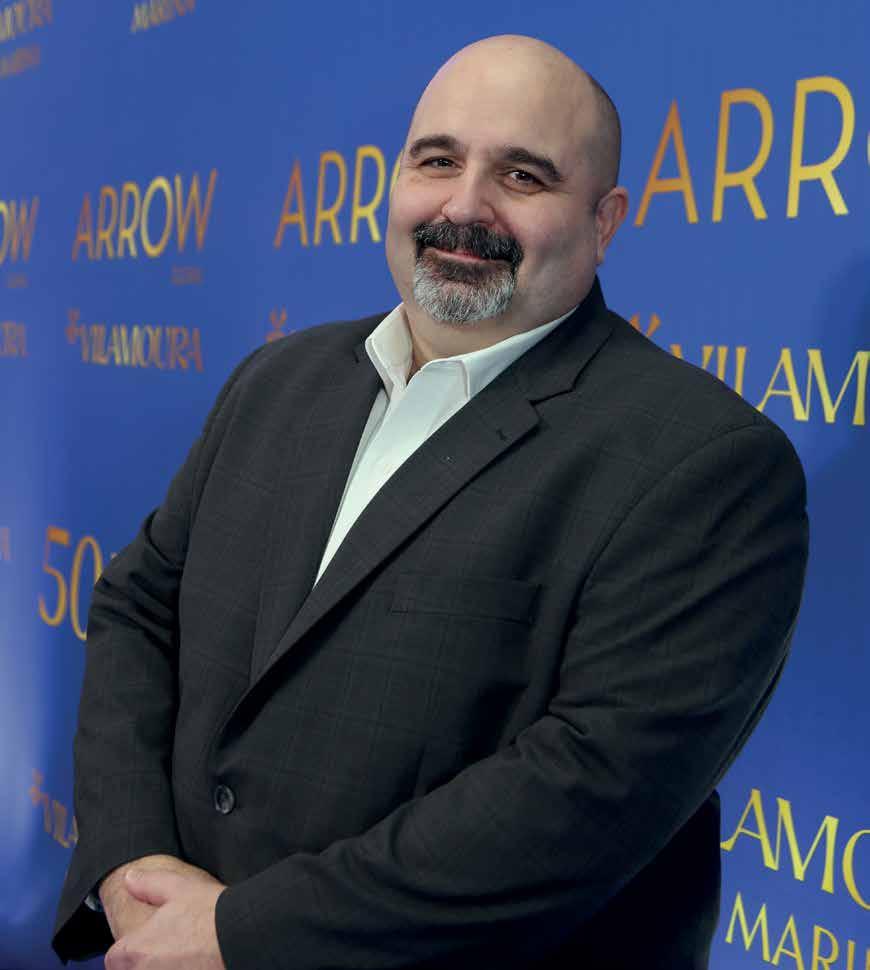
Arrow Global Portugal
“Tornar Portugal um lugar melhor”
“Making Portugal a better place”
John Calvão, Principal Arrow & Fund Portfolio, é a personificação do american dream. Podia ter sido professor de História ou treinador, mas quis o destino que se tornasse investidor e regressasse dos States para Portugal onde está a construir um império.
John Calvão, Principal Arrow & Fund Portfolio is the personification of the American dream. He could have been a history teacher or a trainer but wanted the destiny that would make him an investor and return from the States to Portugal where he is building an empire.

O seu sotaque remete-nos para os Estados Unidos da América (EUA), mas faz-nos também perceber as suas raízes nortenhas. Como é ser filho de descendentes de portugueses e chegar tão alto nas empresas por onde já passou. Pode-se dizer que é a personificação do “american dream” (sonho americano)?
É, sem dúvida, o american dream dos meus pais que foram para os EUA no final da década de 60 do século XX. A minha mãe tinha ido mais cedo do que o meu pai, casaram-se e ela regressou a Portugal. Eu fui um dos primeiros da família a nascer nos EUA. O grande objectivo dos meus pais, ao irem para os EUA, era o de dar uma vida melhor aos filhos, para que pudessem crescer e ter sucesso, além deles claro. Aconteceu o mesmo com os meus familiares.
Dito de outra forma, acredito que correspondi ao american dream dos meus pais, com o sucesso alcançado ao longo da minha carreira. Há, no entanto, um aspecto curioso e feliz: nunca sonhei que poderia regressar e trabalhar em Portugal. Iniciei a minha carreira nos EUA, sempre trabalhei nos EUA, mas depois surgiu a oportunidade de liderar a Whitestar em 2010. Na altura pensei que seriam cinco anos, mas a verdade é que já passaram 15 anos e ainda cá estamos. Sinto-me um felizardo por ter crescido com esta empresa e com o grupo. Este pequeno rapaz (eu) de Chaves, Portugal, onde costumava ir para passar o final dos Verões, conseguiu não só vir trabalhar para Portugal,
como também investir no país. Acredito que isto aconteceu, em grande parte, graças à paixão que tenho pelo país. Sempre esteve no meu DNA. Apesar de ter nascido nos EUA, os meus pais sempre quiseram garantir que Portugal era a minha origem.
E, já agora, também sou adepto do FC Porto e do Desportivo de Chaves. Tendo crescido nos EUA não tenho o mesmo tipo de ligação que as pessoas em Portugal têm ao futebol, mas é sempre bom, como assunto, para discussões quando vou a Portugal, para picar os colegas de trabalho e fazer umas piadas.
Ao longo da sua carreira, deixou a sua marca em empresas como MBIA, MIAC Assurance Corporation ou SCA. Como recorda essa época?
Eu comecei na MBIA, após sair da universidade. Muita gente não sabe, mas quando fui para a Universidade de Manhattan tinha dois objectivos: um, como sempre fui muito ligado ao desporto, e por ter jogado basebol e basquetebol, queria ser treinador. E outro para me formar como professor de História. Por tudo isto, sempre acreditei que iria ser professor de História e treinador. Adoro computadores e vídeo-jogos e na universidade assisti a aulas de programação e o resultado foi uma licenciatura em Computer Science e outra em História.
Após o quarto ano, surgiu a oportunidade de fazer um estágio na MBIA e tive de decidir se continuava para o quinto ano, para tirar o mestrado em História e Educação, ou se
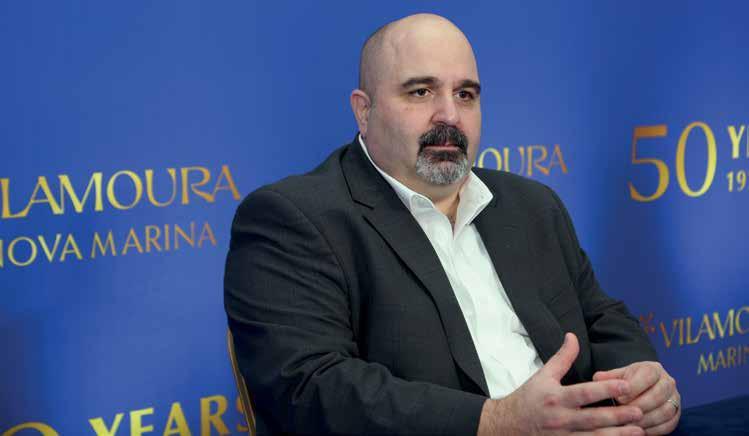
aceitava o desafio da MBIA para me tornar um programador.
A decisão acabou por ser bastante fácil quando pensei no salário que tira um professor de História, em comparação com o que tira um programador. Estive no mundo corporativo até ao ano 2000 e depois iniciei uma empresa com uns colegas. A partir daí trabalhei noutras empresas, mas fiquei conhecido, inclusive no período em que fui para a Whitestar (empresa da Arrow Global Portugal), como o “tipo que vem para dinamizar e fazer crescer as coisas”.
Foi esse “tipo” que fez crescer a Arrow, há já 15 anos. Quais as maiores mudanças que sente de lá para cá?
Quando me juntei à Arrow a empresa estava a passar de uma gestora e detentora de créditos Unsecured (crédito sem garantias reais) para uma empresa que adquiriria e geriria créditos Secured (com Real Estate). Foi o que aconteceu aquando da aquisição da Whitestar, que tinha muita experiência nessa área. Na altura, foi uma grande mudança para a Arrow. E foi este início de caminho que nos permitiu contar a história do Grupo, hoje com diferentes verticais (áreas de negócio).
Na verdade, Portugal é o mercado onde testamos a estratégia de crescimento do Grupo, o que é curioso, pois não conheço nenhuma outra empresa ou fundo de investimento que veja Portugal como tão estratégico. Mas é-o. É, muito provavelmente, o mercado-líder dos investimentos da Arrow.
Ver o caminho que percorremos é muito positivo: passámos de deter um servicer de NPLs como é a Whitestar, para a gestora de investimento e desenvolvimento imobiliário, que é o caso da Norfin, chegando à Details, em Hospitality, Sports & Leisure, e, ainda, com a Restart Capital, na reestruturação de empresas. Pelo meio adquirimos empresas como Vilamoura, a Viriato, as Cerâmicas Aleluia, entre outros.
É incrível a forma como construímos este negócio em Portugal e no mundo Arrow. Isso para mim é muito especial.
Tendo em conta todo esse universo, como está a decorrer a vossa operação?
Enquanto Arrow, tivemos mais um ano muito bom em 2024. Fizemos crescer a nossa oferta, gerindo actualmente um fundo de “lending”, os fundos ACO estão a performar extremamente bem, assim como a angaria -
Na verdade, Portugal é o mercado onde testamos a estratégia de crescimento do Grupo, o que é curioso, pois não conheço nenhuma outra empresa ou fundo de investimento que veja Portugal como tão estratégico.
Actually, Portugal is the market where we assess the group’s growth strategy, which is curious since I don’t know any other company or investment fund that sees Portugal as being so strategic.”
Acredito verdadeiramente que através das nossas empresas fizemos algo de importante e de bom por este País, seja pela criação de emprego ou pelo montante investido até ao momento. I honestly believe that through our companies we’ve done something very important and good for this country, be that job creation or the amount invested to date.”
ção do nosso segundo fundo também está a correr muito bem. E estamos no mercado para levantar um terceiro fundo no final deste ano.
Temos conseguido alargar as geografias onde estamos presentes, como são o caso da Alemanha, Espanha e França, sendo que a estratégia passa por continuarmos a alargar a nossa presença a outros países.
Em 2023 investimos muito em Portugal e voltámos a fazê-lo em 2024. Acredito que temos sido o maior investidor no país nos últimos dois anos. Realizámos algumas transacções muito importantes, uma delas recém-anunciada, que foi Tróia. Acreditamos que é um excelente projecto, em paralelo com o que estamos a fazer em Vilamoura, em Palmares, em Vale Pisão, além de outras possibilidades que podem surgir nos próximos tempos.
Em termos de negócio, adoramos investir em resorts, em determinados activos em sítios específicos, como Vilamoura. Vilamoura é, na verdade, um bom exemplo de um activo que era bom, perdeu qualidade e quando entrámos voltou e continua a crescer e a desenvolver-se no caminho da excelência.
São estas coisas que me deixam muito orgulhoso.
É orgulhoso pelo que faz, ou fá-lo porque é português?
Por vezes o Zach (fundador do Grupo Arrow Global) pergunta-me se isto é paixão ou é outra coisa. Acredito que, efectivamente, a paixão orienta alguns destes negócios bem-sucedidos. Somos, sem dúvida, apaixonados por Portugal e queremos fazer bem pelo Grupo, por esses activos, mas também pelo país.
É frequente perguntarem-me se estou a fazer isto porque sou português. Claro que sim! E que bom que é podermos tornar Portugal um lugar melhor, trazer investimentos para Portugal. Desde 2010, se me perguntarem quanto é que já investimos no país eu diria que, no período Arrow e mesmo antes disso, estamos a falar, provavelmente, de cinco ou seis mil milhões de euros. Parece-me um montante muito significativo de investimentos. Acredito verdadeiramente que através das nossas empresas fizemos algo de importante e de bom por este país, seja pela criação de emprego ou pelo montante

investido até ao momento, além de aspectos periféricos que foram acontecendo e que acabaram por ter, igualmente, impactos positivos. Resumindo, acredito que temos tido um papel importante, ao longo dos últimos anos, na criação de um Portugal melhor.
Your accent clearly places you from the United States of America (USA), but it also reminds us of your roots in the North of Portugal. As a son of Portuguese descendants and having reached the pinnacle of the companies where you have worked, could we say that you are the personification of the ‘American dream’?
Without a doubt it is the American dream of my parents who went to the USA at the end of the 1960s. My mother went earlier than my father, they married, and she returned to Portugal. I was one of the first from the family to be born in the USA. My parents’ main goal in going to the USA was to provide a better life for their children, so they
could grow and be successful, in addition to their success, of course. The same thing happened with my family members. In other words, I think I mirrored the American dream of my parents with the success I’ve achieved throughout my career. Meanwhile, there is a curious and fortunate side: I never dreamt that I would be able to return to work in Portugal. I began my career in the USA; I had always worked in the USA but then came the opportunity to head Whitestar in 2010. At the time I thought it would be for five years, but in truth five years have gone by and we are still here. I feel fortunate to have grown with this company and the group. This small boy (me) from Chaves, Portugal, where he used to spend the end of the summer holidays, managed to not only come and work in Portugal but also invest in the country. I believe this happened in large measure thanks to the great love I had for Portugal. It was always in my DNA. Despite having been born in the USA, my parents had al -
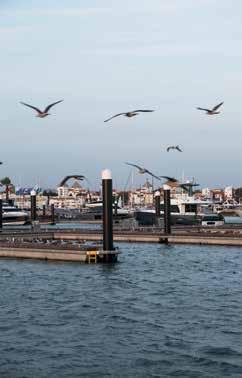


ways wanted to make sure that I knew that I was from Portugal.
And now I’m also a fan of FC Porto and the football club Desportivo de Chaves. Having grown up in the USA, I don’t have the same type of affiliation that people in Portugal have for football, but it’s always good as a topic of discussion when I go to Portugal to tease work colleagues and pull some jokes.
Throughout your career, you’ve left your mark on companies like MBIA, MIAC Assurance Corporation and SCA. How do you recall this period?
I started at MBIA after graduating from university. Many people don’t know this, but when I went to the University of Manhattan, I had two goals: one, as I had always been very linked to sport, and having played baseball and basketball, I wanted to be a trainer. And the other, to train to be a history teacher.
Nevertheless, I always believed that I would become a history teacher and trainer. I love computers and videogames and at university did programming classes and the result was a degree in Computer Science and another in History.
After the fourth year, an opportunity arose to do a work experience placement at MBIA, and I had to decide if I would continue to do the fifth year and do a master’s in history and education or take up the challenge from MBIA and become a programmer. The decision ended up being quite easy when I thought of the salary that I would earn as a history teacher compared to what I would earn as a programmer. I was in the corporate world until 2000, and then I started a company with some colleagues. From there I worked in other companies, but I became known, including in the period when I went to Whitestar (an Arrow Global Portugal company), as a “guy who
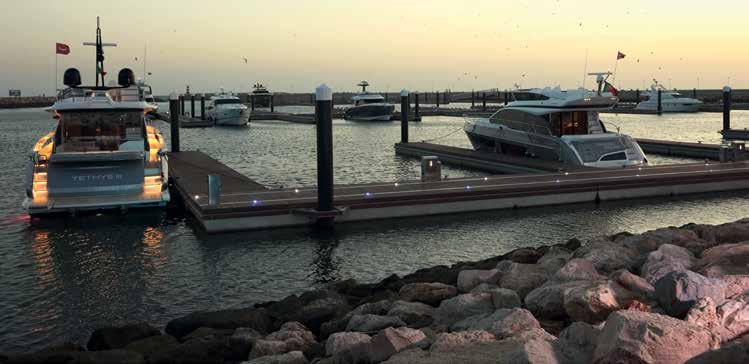
would shake things up and make them grow.”
It was this ‘guy’ who has made Arrow grow for 15 years. What are the biggest changes that you have felt from that time to now?
When I joined Arrow, the company was transforming from an unsecured credit manager and holder into a company that would acquire and manage secured credit (with real estate). That’s what happened at the time that Whitestar acquired it - a company that had a lot of experience in this area. At the time it was a big change for Arrow. And it was this beginning of the road that would enable us to tell the group’s history through different business areas.
Actually, Portugal is the market where we assess the group’s growth strategy, which is curious since I don’t know any other company or investment fund that sees Portugal as being so strategic. But it is. It is very probably the market leader for Arrow investments.
Seeing the road that we’ve travelled is very positive: we’ve gone from holding an NPL servicer as Whitestar is, to an investment manager and real estate developer, which is the case of Norfin, to Details in hospitality, sports and leisure, and also with Restart Capital, in the restructuring of companies. Along the way we acquired companies like Vilamoura and Viriato, Cerâmicas Aleuia, among others.
It’s incredible how we’ve built this business in Portugal and in the Arrow world This for me is very special.
Taking this entire group’s operations into consideration, how is it going?
As for Arrow, we had a great year in 2024. We grew our offer currently managing a lending fund. The ACO funds are performing extremely well, as is the investment attraction to our second fund which is also doing very well. And we’re in the market to set up a third fund at the end of this year. We have succeeded in expanding in the number of countries where we operate, as in the cases of Germany, Spain, and France, with our strategy to broaden our horizons to other countries.
In 2023 we invested a lot in Portugal, and we did so again in 2024. I believe that we have been the biggest investor in Portugal over the last two years. We made some very important transactions, one recently announced was Tróia. We believe it to be an excellent project, in parallel to what we’ve been doing in Vilamoura and Palmares, in Vale Pisão, apart from other possibilities that could arise in the near future.
In terms of business, we love investing in resorts, in specific assets in specific places, like Vilamoura. Vilamoura is, actually, a good example of an asset that had been good, but lost quality, and when we came in made a
comeback and continues to grow and develop on the path to excellence. It’s these things that make me immensely proud.
And proud because of what you do or are doing because you are Portuguese?
Sometimes Zach (Zach Lewy, founder of the Arrow Global Group) asked me if this was passion or something else. I believe that effectively passion guides some of these successful businesses. We are, without a doubt, enthusiastic about Portugal, and we want to do good for the group, for these assets, but also for the country.
And they frequently ask me if I’m doing this because I’m Portuguese. Of course! And how great that we can make Portugal into a better place and bring investments to Portugal. Since 2010, if I were asked how much we had already invested in Portugal I would say that in the Arrow period and even before, we’re probably talking about five or six billion euros; that looks like a very significant amount of investments to me. I honestly believe that through our companies we’ve done something very important and good for this country, be that job creation or the amount invested to date, in addition to the peripheral aspects that have been happening and ended up by also bringing positive benefits. In a nutshell, I believe that we have had an important role over the past few years in creating a better Portugal.

21.10.2025 16:30›19:00
COSENTINO CITY LISBOA
Está a chegar um evento que vai reflectir sobre as novas tendências, inspirações e experiências entre o Imobiliário, a Arte e a Natureza.
Marque já na agenda!

Miguel Marques dos Santos
Sócio da VdA
Sócio responsável da área de Imobiliário & Urbanismo
Partner VdA
Partner Responsible for the Real Estate & Urbanism Area
Em Abril, terminei o meu último artigo para a Magazine Imobiliário dizendo: “É essencial que o novo Governo compreenda o que está em causa [na habitação], seja focado na definição e implementação de políticas públicas [para a habitação] e, sobretudo, não utilize a situação externa como desculpa para deixar de fazer o que tem de fazer.”.
Parece que estamos no bom caminho. O Programa do XXV Governo Constitucional para a área da habitação é claro quanto ao diagnóstico e muito focado na definição e implementação das soluções.
O diagnóstico, que já tinha sito feito pelo anterior Governo (de curta duração) da AD no âmbito do Programa “Construir Portugal”, e que é cada vez mais consensual na sociedade portuguesa, assenta na base de que o acesso à habitação, se tornou, para muitos, um desafio quase intransponível, sobretudo para os jovens e para as famílias de rendimentos médios e baixos (com os preços das casas e das rendas a cresceram a um ritmo muito superior ao dos rendimentos), quer em resultado da falta de oferta de novas habitações (o ritmo de construção abrandou drasticamente na última década e meia), quer em resultado de um mercado de arrendamento totalmente disfuncional.
Face a este diagnóstico, o Programa do Governo definiu três metas essenciais: (i) Reforçar o acesso da população a habitação digna e acessível; (ii) Inverter a tendência de crescimento acelerado de preços e rendas da habitação acima da evolução do rendimento dos portugueses, através de um choque de oferta de habitações; e (iii) Apoiar os arrendatários em situações de vulnerabilidade.
E para implementar estas três metas essenciais, o programa do Governo definiu um con-
junto de medidas, com soluções concretas e muito precisas.
Este conjunto de medidas pode ser agrupado em três grupos: medidas para potenciar um choque de oferta na habitação, medidas para potenciar a estabilidade e confiança no mercado de arrendamento e medidas para assegurar apoios à procura dos arrendatários mais vulneráveis.
O eixo central do programa reside no aumento significativo da oferta de habitação, seja ela pública, privada ou cooperativa. O objectivo é simples, mas ambicioso: garantir que a produção de novas casas, a preços comportáveis, acompanhe as necessidades da classe média e dos mais vulneráveis. Para tal, o Governo propõe a dinamização de novas centralidades urbanas, articulando-se com os municípios e recorrendo a modelos de planeamento e licenciamento descentralizados, inspirados em experiências de sucesso como a da Expo.
A mobilização de terrenos públicos e privados, a flexibilização das regras de ocupação do solo e a simplificação dos processos de licenciamento são também medidas centrais para acelerar a construção. O programa prevê ainda incentivos fiscais, como a redução ou eliminação de taxas urbanísticas e a aplicação de IVA reduzido nas obras de construção e reabilitação, tornando o investimento mais atractivo para promotores e cooperativas.
Outro pilar fundamental é a estabilização e revitalização do mercado de arrendamento. O Governo regista que as políticas recentes, marcadas por controlos de rendas e medidas de arrendamento forçado, apenas agravaram a escassez de casas disponíveis e fizeram subir os preços. A nova abordagem passa por criar contratos de arrendamento seguros e de
longo prazo, com regras claras e estáveis, que ofereçam garantias tanto a inquilinos como a proprietários.
A resolução célere de litígios, o reforço de mecanismos extrajudiciais e a revisão dos seguros de renda são igualmente apontados como formas de devolver previsibilidade e segurança ao sector.
Num terceiro pilar, independente, mas relacionado com o pilar do mercado de arrendamento, o Estado compromete-se a apoiar, de forma transitória, os arrendatários em situação de vulnerabilidade, através de subsídios calculados de forma simples e transparente, ajustados à localização e ao rendimento dos beneficiários.
As medidas estão definidas, são boas e fazem muito sentido face à realidade que temos, mas o sucesso dependerá, mais uma vez, da capacidade de as detalhar implementar de forma célere e empenhada.
In April I signed off on my latest article for Magazine Imobiliário saying: “It is essential that the new government understands what is at stake, is focused on defining these public policies and, above all, not using the overseas situation as an excuse not to do what needs to be done”. It seems we’re on the right track.
The XXV Constitutional Government’s Programme for the housing area is clear as a diagnosis and very focused on defining and implementing solutions. The diagnosis, which had already been made by the previous (short-lived) Democratic Alliance (AD) government as part of its ‘Build Portugal’ programme, is increasingly more consensual in Portuguese society, based on the idea that access to housing has become, for many, an almost insurmountable challenge, particularly for young people and families with mid and low incomes (with the price of houses and rents growing at a rate far exceeding income), both as a result of a lack of supply of new housing (the rate of construction has slowed drastically over the last 15-years), and because of a totally dysfunctional rental market. Given this diagnosis, the government has defined three essential targets: (i) Reinforcing the population’s access to decent and affordable housing; (ii) Inverting the accelerated growth trend of house prices and rents above the evolution of Portuguese salaries, by massive house-building programmes; and (iii) Subsidising renters in situations of vulnerability. And to implement these three essential goals,
the government’s programme has defined a number of measures, with concrete and very precise solutions.
This number of measures could be grouped in three: measures to provide a boost in housing supply, measures to provide stability and confidence in the rental market, and measures to ensure support to help the most vulnerable tenants. The central axis of the programme lies in creating a significant increase in housing, whether public, private, or cooperative. The goal is simple, but ambitious: guaranteeing that the production of new houses at reasonable prices, keeps up with the needs of the middle class and the vulnerable. To that end, the government has suggested the revitalisation of new urban centres, working closely with municipal councils and decentralised licensing and planning models, inspired by the successful experiences of Expo.
The mobilisation of public parcels of land, making land occupation rules more flexible and simplifying licencing processes are also key measures to accelerate construction. The programme also foresees tax incentives, such as the reduction or elimination of municipal taxes and the application of a lower VAT rate on construction and renovation works, making the investment more attractive for developers and cooperatives.
Another fundamental pillar is the stabilisation and revitalisation of the rental market. The government has recognised that recent policies, marked by rent controls and forced rental measures, only made the lack of housing situation worse and drove up prices. The new approach involves creating secure and long-term rental contracts, with clear and stable rules, which offer guarantees both to tenants and landlords. The swift resolution of litigation, reinforcing extra-judicial mechanisms, and the revision of rental insurance are equally seen as ways of bringing back predictability and security to the sector.
In a third, independent pillar, but related to the rental market pillar, the State has made a temporary commitment to support tenants in a situation of vulnerability through subsidies calculated in a simple, transparent form, adjusted to location and the income of the beneficiaries. The measures are defined, they are good and make a lot of sense given the reality that we have, but success will depend, once again, on implementing them to the letter quickly and commit to them.

Lisboa recebeu a 2.ª edição da conferência Green Shapers, promovida pela Magazine Imobiliário, no Dia Nacional da Energia. O evento reuniu especialistas para debater o futuro sustentável do sector, com destaque para a transição energética, a inovação tecnológica e os desafios do financiamento verde. Lisbon hosted the 2nd edition of the Green Shapers Conference organised by Magazine Imobiliário on National Energy Day. The event brought together specialists to debate the sustainable future of the sector with special emphasis on energy transition, technology innovation and the challenges of green financing.
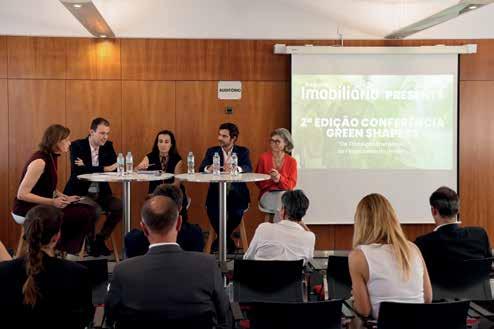
O evento iniciou-se com intervenções que destacaram a urgência da mudança. Nelson Lage, presidente da ADENE - Agência para a Energia, sublinhou que “mais do que discutir tendências, é necessário reflectir sobre responsabilidade” e destacou a centralidade do cidadão no processo de transição energética. Lembrando que “quem está no sector imobiliário está, hoje, também no sector da energia, da mobilidade e da água”. Seguiu-se a visão tecnológica de Ricardo Silva e Nuno Alpendre, partners da Deloitte, que apresentaram a plataforma Synergy, já em funcionamento na Câmara de Cascais, como exemplo de como a digitalização e a inteligência artificial podem transformar a gestão dos edifícios. A inteligência, dizem, está na integração de sistemas para antecipar necessidades e melhorar a eficiência e o conforto.
Hélder Santos, administrador da Jular, defendeu a pré-fabricação em madeira como solução estruturante para a sustentabilidade no sector. A madeira, lembrou, é a única matéria-prima que fixa CO₂, permitindo edifícios com pegada carbónica positiva, maior qualidade construtiva e durabilidade.
Daniela Silva, responsável de sustentabilidade da Grohe Portugal, abordou a importância da eficiência hídrica no interior dos edifícios, com soluções tecnológicas que incentivam comportamentos conscientes no uso da água.
Na mesa-redonda “Imobiliário Sustentável vs. Financiamento Verde”, moderada por
Maria da Cunha Menezes, head of Project and Development services and sustainability da JLL Portugal, discutiu-se como financiar a transformação sustentável do imobiliário. João Duarte Silva, client solutions director e business development director da Arcadis Portugal, destacou que os promotores já valorizam a sustentabilidade, mas alertou para a resistência quando os ganhos não são imediatos. Isabel Santos, founder & partner da Green Lab, elencou os critérios mais relevantes para os financiadores: certificações, materiais sustentáveis, eficiência de recursos, conforto térmico e acústico. Cristina Mel Antunes, responsável de negócio ESG e Green Finance do Banco Santander Portugal, defendeu que o financiamento verde está disponível, mas que faltam evidências simples e acessíveis que permitam aos bancos classificar os projectos. Rui Fragoso, head of Buildings and Efficiency of Resources da ADENE, sublinhou que a certificação energética está a evoluir, tornando-se cada vez mais uma ferramenta de apoio ao investimento e à credibilidade dos activos. O encerramento ficou a cargo de Osório de Castro Tomás, director adjunto dos Serviços Centrais da Fundação Calouste Gulbenkian, que deixou um apelo à responsabilidade colectiva. A transformação começou, e é com acção coordenada que se constrói um imobiliário verdadeiramente sustentável.
The event kicked off with talks that highlighted the need for change. Nelson Lage,




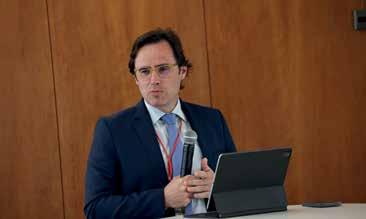
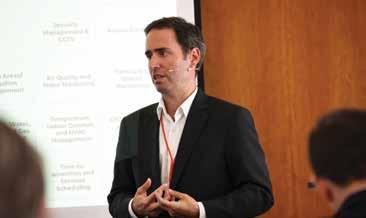


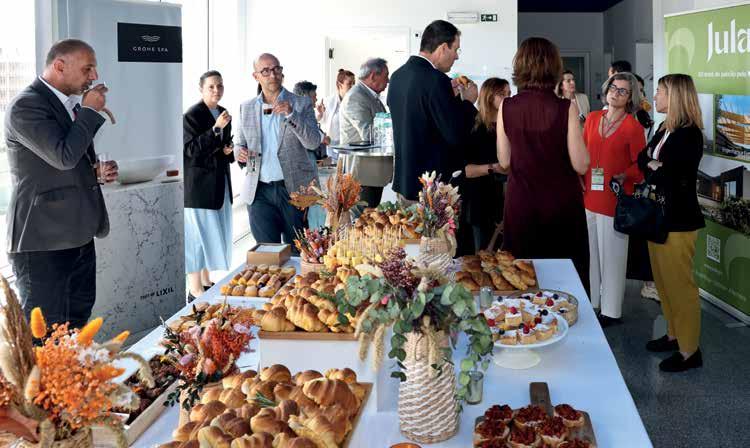
President of ADENE - Agency for Energy, emphasised that “more than discussing trends, it was important to reflect on responsibility” and highlighted the key position that the citizen had in the energy transition process. And reminded: “Whoever is in the real estate sector today is also in the energy, mobility and water sector.”
This was followed by the technology vision of Ricardo Silva and Nuno Alpendre, Deloitte partners - that presented the synergy platform at Cascais Town Council and is already up and running - as an example of how digitalisation and artificial intelligence can transform and manage buildings. Smart technology, they say, is through integrating systems that can anticipate needs and improve efficiency and comfort.
Hélder Santos, the CEO of Jular, argued for pre-fabrication in wood as a structural solution for the sustainability of the sector. Wood, he recalled, is the only raw material that captures CO2, enabling buildings to have a low carbon footprint, a greater construction quality and durability.
Daniela Silva, who is head of sustainability at Grohe Portugal, addressed the importance
of water efficiency in the interior of buildings with technology solutions that encourage an awareness of water saving behaviours.
On the round table ‘Sustainable Real estate vs. Green Financing ‘moderated by Maria da Cunha Menezes, Head of Project and Development Services and Sustainability at JLL Portugal, discussed how to finance the sustainable transformation of real estate.
João Duarte Silva, Director of Client Solutions and Business Development at Arcadis Portugal, highlighted that developers now prioritised sustainability, but warned that some were resistant when they didn’t see immediate returns. Isabel Santos, Founder & Partner of Green Lab, highlighted the most relevant criteria for financiers: certifications, sustainable materials, efficiency of resources, thermal and acoustic comfort. Cristina Mel Antunes, who heads the ESG and Green Finance division at Banco Santander Portugal argued that green financing is available but said that there was a lack of simple and accessible way of proving implementation that would enable banks to classify projects. Rui Fragoso, Head of Buildings and Efficiency of Resources at ADENE, underscored that energy certifica -
tion was evolving, making it increasingly a support tool for investment and assets credibility.
The event was closed by Osório de Castro Tomás, Adjunct Director of Central Services at the Calouste Gulbenkian Foundation who called for collective responsibility. Transformation had begun and it is through coordinated action that a truly sustainable real estate is built.
Quem está no sector imobiliário está, hoje, também no sector da energia, da mobilidade e da água. Whoever is in the real estate sector today is also in the energy, mobility and water sector.”

Em 2012, Portugal enfrentava as duras consequências da crise do Euro. Na altura, circulavam rumores de que o país só tinha dinheiro em caixa para dois meses de salários da função pública. O Governo, com a missão de restaurar a solvência nacional, lançou um conjunto de reformas das quais o país continua hoje a beneficiar — destacando-se o regime dos Residentes Não-Habituais (RNH) e os Vistos Gold. Durante os finais da década de 1990 e os primeiros anos de 2000, mesmo antes da crise financeira global, Portugal apresentava um crescimento anémico e ficava atrás do seu vizinho ibérico.
Os investidores internacionais privilegiavam consistentemente a Espanha, um mercado maior e com um governo mais receptivo. A Espanha era, então, um centro mundial de desporto, moda, finanças e estilo de vida. Em 2004, aprovou a chamada “Lei Beckham”, que conferia vantagens fiscais a expatriados. Portugal viria a adoptar uma medida semelhante
cinco anos depois, mas com regras demasiado complexas e pouco práticas.
Estes regimes fiscais especiais, na prática, reduzem a carga fiscal local e internacional por um período determinado, incentivando a mudança de residência.
Em 2012, impulsionado pela urgência de reanimar a economia e equilibrar as contas públicas, o Governo português reestruturou o regime RNH, tornando-o mais transparente, previsível e prático. Os novos residentes passaram a beneficiar de taxas reduzidas de imediato, evitando reembolsos posteriores, sujeitos a mais escrutínio por parte das autoridades tributárias. A prioridade foi garantir simplicidade e segurança jurídica.
O novo RNH, juntamente com os Vistos Gold, revelou-se uma medida transformadora. Reintroduziu um preço de referência para os activos imobiliários, permitindo escoar imóveis que antes pesavam nos balanços da banca. Os novos residentes geraram procura por serviços cosmopolitas, injectaram dinamismo na economia e colocaram Portugal no mapa como destino de qualidade de vida. Lisboa e Porto acolheram uma nova comunidade internacional, e imóveis outrora devolutos e degradados voltaram a ter viabilidade, foram reabilitados e transaccionados. O turismo urbano floresceu com viajantes a quererem viver o novo “estilo de vida português”. Esta nova energia económica dinamizou os centros urbanos, aumentou o tráfego no comércio e promoveu projectos habitacionais de maior qualidade. Mas, em 2023, esse ciclo positivo foi interrompido.
O governo de esquerda, pressionado por partidos da extrema-esquerda, aboliu o regime RNH. O resultado? Muitos potenciais residentes — especialmente reformados e profissionais qualificados — reorientaram os seus planos
de mudança para países como Itália e Grécia, que oferecem condições fiscais e de vida semelhantes. Paralelamente, houve uma crescente pressão política para eliminar os Vistos Gold e limitar o alojamento local — precisamente os instrumentos que tinham ajudado Portugal a sair do buraco onde mergulhara durante a crise do Euro.
No universo das criptomoedas, existe um termo: “rug pull” – literalmente “o puxar do tapete”. Consiste em criar entusiasmo em torno de um activo, atrair investimento, e depois mudar subitamente as regras do jogo ou abandonar o projecto, deixando os investidores desprotegidos. Foi exactamente isso que Portugal fez nos últimos cinco anos: atrair residentes e investidores internacionais com promessas atractivas — para depois mudar as regras a meio do jogo.
Esta atitude mina a credibilidade do país enquanto destino de investimento estável e seguro. E o investimento segue as pessoas. Quando um país acolhe quadros superiores, empresários e investidores, estes trazem não só as suas famílias, mas também os seus negócios, capitais e redes de contacto. As medidas do anterior governo foram um verdadeiro “rug pull” político sobre quem pretendia investir e estabelecer-se em Portugal com seriedade. Infelizmente, o problema não se limita à esquerda.
Hoje, partidos de direita ponderam duplicar o prazo de residência necessário para aceder à nacionalidade portuguesa, de cinco para 10 anos. Para muitos, trata-se de um golpe ainda mais flagrante. Quem se mudou para Portugal com a intenção de se tornar cidadão vê, agora, a meta afastar-se mais cinco anos.
Recentemente, participei numa sessão no Reino Unido sobre o novo regime fiscal para residentes — IFICI, apelidado de RNH 2.0. Segundo
a apresentação, o regime visa atrair perfis muito específicos: quadros superiores, profissionais técnicos, gestores de activos, investidores de capital de risco e start-ups. Os candidatos terão de provar que se enquadram nestas categorias perante as autoridades fiscais. Esta exigência deixa de fora muitos profissionais em início de carreira. Importa referir também que as pensões deixaram de beneficiar de taxas reduzidas — alegadamente devido a queixas de países como a Suécia, que acusavam Portugal de não cumprir as normas fiscais da OCDE. Curiosamente, países como Itália, Grécia, Chipre, Malta e vários da Europa de Leste mantêm regimes semelhantes, seja por programas especiais ou através das suas próprias tabelas fiscais.
Na minha opinião, o RNH 2.0 é, na melhor das hipóteses, um incentivo acessório. Pode continuar a ser útil para certos profissionais qualificados, mas perdeu a universalidade e a simplicidade do regime original. No contexto britânico actual — com impostos elevados, crescente regulamentação e uma economia em contração — muitos indivíduos com património procuram alternativas. Portugal continua a captar alguns destes, mas o novo regime, mais exigente, arrisca-se a desviar candidatos para países mais acolhedores.
Esta mudança terá certamente reflexo no segmento premium do imobiliário português. Nos últimos dez anos, a procura externa sustentou a valorização dos imóveis e apoiou a regeneração urbana. Claro que os impostos não são o único factor que leva alguém a mudar-se para Portugal — mas são, para muitos, um factor decisivo, especialmente quando trazem consigo património relevante ou planos de longo prazo.
In 2012, Portugal was grappling with the fallout of the Eurozone crisis. At the time, dire rumours circulated that the country’s coffers had cash for just two months of civil servants’ salaries. The government, tasked with restoring solvency, launched a series of reforms that Portugal continues to benefit from today — most notably the Non-Habitual Resident (NHR) regime and the Golden Visa.
In the late 1990s and early 2000s, even before the global financial crisis, Portugal experienced sluggish growth and lagged behind its Iberian neighbour. International investors consistently favoured Spain, a larger market with a more responsive government. Spain was also
a global hub for sport, fashion, finance, and lifestyle. In 2004, it introduced the “Beckham Law,” offering tax advantages to expats. Portugal implemented a similar scheme five years later, but it was unwieldy and impractical. Special tax regimes like these essentially reduce local and international tax burdens for a fixed period, incentivising relocation.
By 2012, driven by the urgent need to stimulate the economy and balance public accounts, the Portuguese government restructured the NHR to make it more transparent, predictable, and practical. New residents could access reduced taxes immediately, without waiting for complex reimbursements that could later be challenged. The guiding principles were simplicity and certainty.
The revamped NHR and Golden Visa schemes proved to be transformational. They reintroduced a bid price for real estate — providing a clearing level for properties previously dragging down bank balance sheets. New residents brought demand for international services, renewed dynamism, and positioned Portugal as a desirable lifestyle destination. Lisbon and Porto saw an influx of foreign residents, and long-neglected properties were refurbished and brought back into use. Tourism flourished as travellers sought to experience the newly “cool” Portugal. This surge in economic activity revitalised city centres, drove up retail traffic, and supported the development of higherquality housing.
But by 2023, much of this momentum was undone.
The left-wing government, under pressure from extreme-left parties, abolished the NHR regime. The result? Many potential expats — especially retirees and professionals — redirected their relocation plans to countries like Italy and Greece, which offer comparable lifestyles and favourable tax conditions. Simultaneously, political pressure mounted to eliminate Golden Visas and restrict holiday rentals — precisely the mechanisms that had once helped Portugal escape the depths of the Euro crisis.
In the world of crypto, there’s a term: the “rug pull.” It refers to the act of hyping up an asset, attracting investors, and then abruptly changing the terms or abandoning the project after cashing in. A classic “pump and dump.” That is essentially what Portugal has done over the past five years: enticing international residents and investors with attrac-
tive terms — only to shift the goalposts. This undermines the country’s credibility as a stable, investable jurisdiction. And investment follows people. When a country is welcoming to senior managers, entrepreneurs, and investors, they often bring not just their families — but their businesses, their capital, and their networks. The previous government’s actions amounted to a policy rug pull on anyone looking to relocate, invest, and contribute meaningfully to Portugal.
Unfortunately, it doesn’t stop with the left. Today, right-leaning parties are considering doubling the minimum residency requirement for citizenship from 5 to 10 years. For many, this is an even more blatant bait-and-switch. Someone who moved to Portugal with the intention of becoming a citizen now finds the finish line moved further away.
I recently participated in a UK event promoting the IFICI regime — colloquially dubbed NHR 2.0. According to the presentation, the regime targets specific profiles: senior corporate managers, tech professionals, asset managers, venture capitalists, and startup founders. Applicants must prove their eligibility to tax authorities. However, this excludes many junior professionals. Additionally, pension income is no longer taxed at a preferential rate — reportedly due to pressure from countries like Sweden, which argued that Portugal violated OECD tax norms. Curiously, other EU countries — including Italy, Greece, Cyprus, Malta, and much of Eastern Europe — continue to offer similarly low rates either via special regimes or standard tax tables.
In my view, NHR 2.0 is more of a marginal benefit than a compelling incentive. It may still appeal to qualifying professionals but lacks the universal appeal of its predecessor. Given current UK trends — high taxes, increasing regulation, and a stagnant economy — many affluent individuals are actively seeking alternatives. Portugal has continued to attract some of this group, but the more complex requirements of NHR 2.0 risk pushing potential newcomers toward more accommodating countries. This shift will likely cool Portugal’s premium real estate segment. For the past decade, foreign demand has supported price appreciation and spurred urban regeneration. While taxes are never the only reason someone chooses to relocate, they are undeniably a factor — especially for those bringing significant assets or planning a longer-term commitment.
Anabela Loureiro
De Veneza já não partem as galeras venezianas de outras épocas áureas. Contudo, chegaram às dezenas em iates XL provenientes do aeroporto, porto e até oriundos das ilhas da Croácia mesmo ali ao lado.
Não estavam cheios de turistas, mas de convidados VIP para a celebração do extravagante casamento do bilionário dono da Amazon. Um grupo de activistas ousou gritar: “Veneza não está à venda.” Mas ao que parece, uma cidade que é Património da Humanidade, pode ser alugada, de forma privada e com o aval das entidades públicas, pela módica quantia de 13 a 26 milhões de euros. “Peanuts” para quem tem uma fortuna avaliada em 172 mil milhões de euros.
Sempre ouvi dizer que tudo tem um preço. O que me leva a questionar: Se a moda pega, quanto será que custará fechar a cidade de Lisboa e o rio Tejo para uma cerimónia “bling, bling” matrimonial em Portugal?
The Venetian galleys no longer depart from Venice as they did in other golden eras. However, scores arrive in super-size yachts from the port, the airport, and even from the Croatian islands next door.
They were not packed with tourists, but with VIP guests to celebrate the extravagant wedding of the billionaire owner of Amazon. A group of activists boldly shouted: “Venice is not for sale.” But from what it seems, a city that is a World Heritage site can be rented out, privately and with the approval of public entities, for the modicum amount of between 13 to 26 million euros - “Peanuts” for anyone who has a fortune worth 172Bn.
I’ve always heard it said that everything has its price. And this leads me to ask: If the fashion catches on, how much will it cost to close Lisbon and the River Tagus for a ‘bling, bling’ wedding ceremony in Portugal?


